
CCBSA INTRODUCES NEW LEADERSHIP


CCBSA INTRODUCES NEW LEADERSHIP
Coca-Cola Beverages South Africa (CCBSA) is pleased to announce the appointment of three dynamic leaders who will help shape the company's future with their expertise and commitment to excellence. These strategic leadership changes reflect CCBSA's vision to refresh our consumers everyday while positively impacting the lives of our customers, employees and communities.

Appointed as People and Culture Director
Tony brings a wealth of experience, with over 20 years in Human Resources, including 15 years at senior leadership and executive levels. He has a long-standing association with CCBSA. Over his 14 years with the company, he has gained a deep understanding of its business, culture, and people.


His extensive career spans unionised and corporate environments across industries such as Food and Beverages, Mining, Development Finance and Consumer Goods. He has held significant roles at leading organisations, including De Beers, Lonmin, the Industrial Development Corporation (IDC), Amalgamated Beverage Industries, and Unilever. His expertise positions him to lead the People and Culture function with a focus on fostering a workplace that aligns with CCBSA's strategic objectives.



Appointed as Public Affairs,
Effective 1 January 2025, Basetsana-Bame Modimogale has been appointed as Public Affairs, Communications, and Sustainability Director for CCBA South Africa. Modimogale's appointment reflects CCBSA's commitment to empowering its people and fostering leadership growth from within.



To enhance the alignment of IT capabilities with business needs, Edwin Fisher has been appointed IT Director for CCBSA, effective 1 January 2025. With 24 years of IT experience, including 12 years in senior leadership roles, Fisher has been with CCBA for 17 years, showcasing his deep understanding of the company’s IT landscape.
Under his leadership, CCBSA aims to drive its digitisation agenda, fostering agile, responsive, and integrated IT services that support employees and strategic objectives.
Since joining the business in 2007 as a Trainee Account Manager, Modimogale has excelled in a series of leadership roles, including Sales Manager, Key Accounts Manager, Customer Manager TEG, General Manager Alternative Revenue Streams, and her most recent position as Country Lead꞉ Customer Excellence National Accounts. In each role, she has demonstrated exceptional leadership, strong customer relationship management skills, and the ability to drive results through strategic partnerships.
Modimogale holds a BCom in Law, a BCom Honours in Strategic Management, and a Master of Business Administration (MBA). Her contributions to the business have been recognised through numerous internal and external awards, underscoring her impact and achievements.
CCBSA’s leadership team is committed to driving the company’s strategic growth ambition through a strong customer centric strategy. The team is also tasked with responding to the rapidly changing trading environment that requires sound and expeditious decision making.
The team will also mobilise employees and develop talent to ensure they reach their full potential while embedding values such as integrity, accountability, and collaboration. With over 7,000 employees across 13 manufacturing facilities, CCBSA continues to execute its vision with passion for business, brands, customers, and the communities we serve.
“As we welcome Tony, Bame and Edwin to their new roles, we are confident in their ability to lead with purpose and deliver results that drive sustainable growth for our organisation and stakeholders,” concluded Rajbally.

Follow us...
SA Business Integrator
























As we mark Freedom Month, we are reminded of how far South Africa has come in the 31 years since democracy was established. It’s a time for reflection – on the struggles that brought us here, the progress we’ve made, and the opportunities still ahead. More than that, it is a moment to celebrate the resilience, innovation, and determination of South Africans who continue to shape industries, break barriers, and redefine what’s possible.
In this issue, we spotlight Advocate Veerash Srikison, a legal powerhouse making justice more accessible through mediation and dispute resolution. Jo-Anne Arends, Product Manager at Nashua, unpacks how smart energy investments are helping businesses cut costs and reduce reliance on the grid, while Simthembile Mapu, Executive Manager at RBIDZ, shares how a R247 billion investment is driving industrial growth and reshaping South Africa’s energy mix.
We also turn our focus to VUKA Group, which is driving growth and sustainability across Africa through platforms like Enlit Africa. This hybrid event returns to Cape Town from 20–22 May 2025, bringing together industry leaders for exhibits, networking, and expert talks on energy and decarbonisation. VUKA CEO David Ashdown shares his vision for Africa’s energy future and the role collaboration plays in driving real change.
These features show how smart investments and teamwork are shaping the country’s future. From making justice more accessible and slashing energy costs, to securing major investments and driving collaboration, these stories highlight leaders who are rolling up their sleeves and getting things done. It’s a look at how South Africa is not just keeping up with change, but actively creating it.
Tarryn






P l u g a n d G o
P l u g a n d G o
T r a c k i n g
T r a c k i n g
N o M o n t h l y F e e s
N o M o n t h l y F e e s
O f f l i n e P r i v a c y E a s y t o U s e
O f f l i n e P r i v a c y E a s y t o U s e
D e t a i l e d G P S

D e t a i l e d G P S
R e p o r t i n g
R e p o r t i n g
B u s i n e s s m i l e a g e a n d S A R S c l a i m s s o r t e d
B u s i n e s s m i l e a g e a n d S A R S c l a i m s s o r t e d


w w w . l i t t l e l o g b o o k . c o . z a w w w . l i t t l e l o g b o o k . c o . z a
w w w . l i t t l e l o g b o o k . c o . z a w w w . l i t t l e l o g b o o k . c o . z a
































PUBLISHER
Elroy van Heerden-Mays elroy@mediaxpose.co.za
EDITOR
Tarryn-Leigh Solomons editor@sabusinessintegrator.co.za
SUB-EDITOR
Sameena Amien sub@mediaxpose.co.za






6 Carlton Crescent, Parklands, 7441 Tel: 021 424 3625 Fax: 086 544 5217
E-mail: info@sabusinessintegrator.co.za Website: www.mediaxpose.co.za PUBLISHED BY DISTRIBUTION Media Support | On the Dot IMAGE CREDITS: 123rf.com

Disclaimer: The views expressed in this publication are not necessarily those of the publisher or its agents. While every effort has been made to ensure the accuracy of the information published, the publisher does not accept responsibility for any error or omission contained herein. Consequently, no person connected with the publication of this journal will be liable for any loss or damage sustained by any reader as a result of action following statements or opinions expressed herein. The publisher will give consideration to all material submitted, but does not take responsibility for damage or its safe return.
CONTENT MANAGER
Wadoeda Adams artwork@mediaxpose.co.za
DESIGNERS
Anja Bramley | Shaun van Heerden-Mays | Tia Arendse
EDITORIAL CONTRIBUTORS
Lili Nupen
Gerhard Bolt
Sabine Dall’Omo
Sarah van Heerden
John Taylor
Mark Evans
Rowan de Klerk
ADVERTISING SALES MANAGER
Rashieda Wyngaardt rashieda@sabusinessintegrator.co.za
ADVERTISING SALES
Luthando Maqungo luthando@sabusinessintegrator.co.za
Reginald Motsoahae reginald@sabusinessintegrator.co.za
Luyanda Mbopa luyanda@sabusinessintegrator.co.za
MEDIA PARTNERSHIPS | EDITORIAL ASSISTANT
Maurisha Niewenhuys maurisha@mediaxpose.co.za
DIGITAL MARKETING MANAGER
Juhi Rampersad juhi@mediaxpose.co.za
DIGITAL AND SOCIAL MEDIA
Kyla van Heerden social@mediaxpose.co.za
DISTRIBUTION & SUBSCRIPTIONS
Shihaam Gyer distribution@mediaxpose.co.za
CHIEF FINANCIAL OFFICER
Shaun van Heerden-Mays shaun@mediaxpose.co.za
RECEPTIONIST
Kayley Townsend receptionist@mediaxpose.co.za
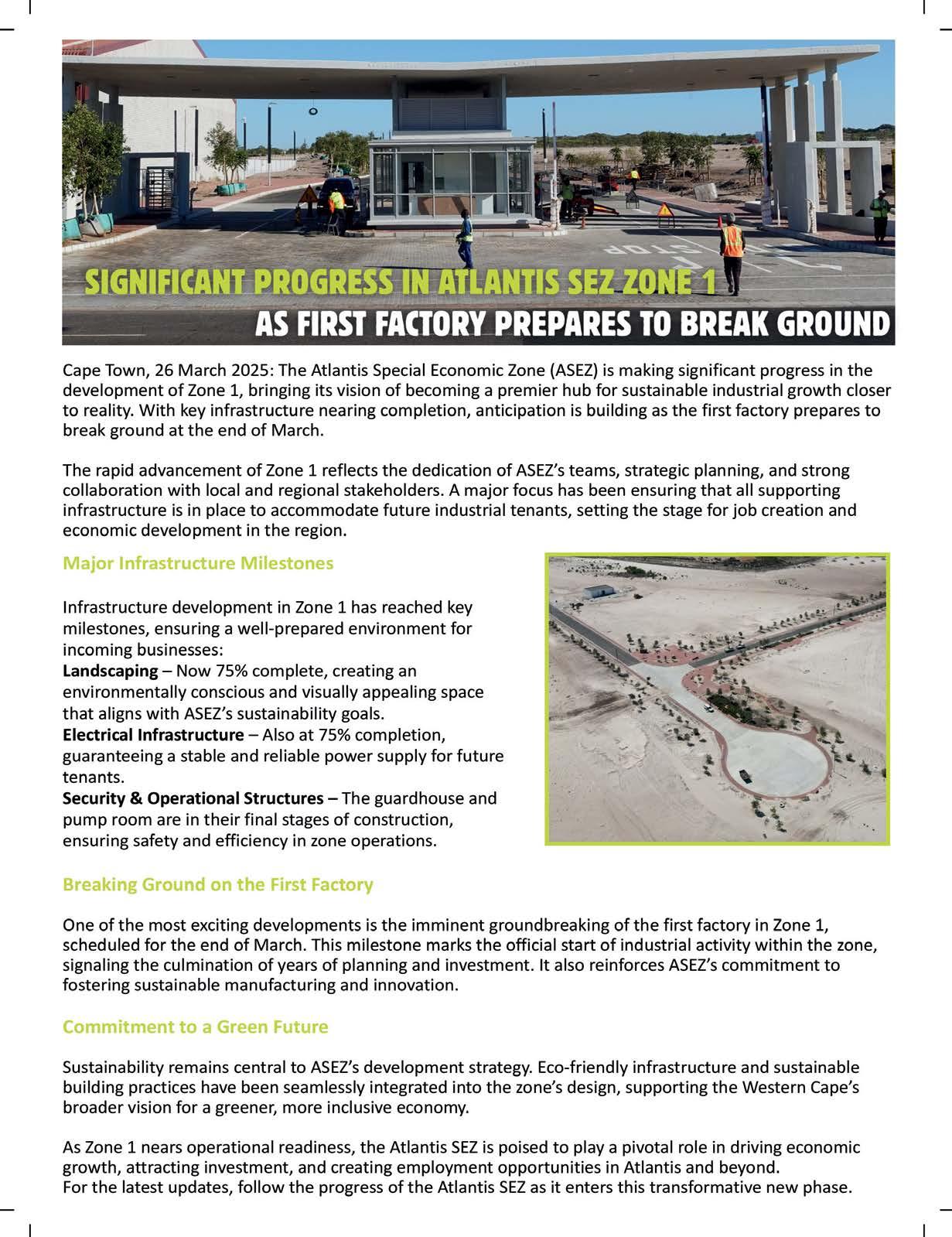

Advocate Veerash Srikison is a highly respected mediator and advocate based in Johannesburg, South Africa. As the founder of Fair Practice, named the 2022/2023 South African Mediation Firm of the Year, her expertise spans commercial disputes, conflict resolution and a strong commitment to access to justice.
ADVOCATE VEERASH SRIKISON | FAIR PRACTICE

As the founder of Fair Practice, South Africa’s 2022/2023 Mediation Firm of the Year, what do you believe sets your firm apart in the field of dispute resolution?
At Fair Practice, we’ve always believed that third-party facilitated negotiation is more than just a soft approach to dispute resolution – it is a transformative tool for fostering dialogue, restoring relationships, and achieving realistic, sustainable resolutions crafted by the people who are affected by the outcome.
As a specialist alternative dispute resolution (ADR) practice, we are pioneers in making mediation accessible and inclusive. Our services extend beyond boardrooms and courtrooms – we engage with communities, corporations and institutions to educate and advocate for ADR as a first resort, not a last. We also leverage technology to provide online mediation services so those in remote areas have access to professional dispute resolution.
Mediation
is never just about law; it’s about human behaviour, power dynamics and finding common ground amid seemingly irreconcilable differences."
What truly sets Fair Practice apart is our multidisciplinary and culturally informed approach to mediation.
Mediation is never just about the law; it’s about human behaviour, power dynamics and finding common ground amid seemingly irreconcilable differences. Conflict is deeply personal and often tied to cultural, emotional, and systemic factors. We take the time to understand the unique dynamics of each dispute, ensuring that our approach is tailored to the individuals, organisations and communities we serve.
How has your Harvard University training and global recognition influenced the way you approach cases here?
At Harvard, I was exposed to cutting-edge negotiation strategies, psychological insights into conflict resolution, and the advanced mediation frameworks used by some of the world’s leading diplomats, legal minds, and business leaders. This expanded my understanding of how to navigate complex high-stakes disputes with
precision and adaptability, which has had a profound impact on my approach to cases in South Africa. At the same time, my global recognition as a mediator has allowed me to engage with diverse cultures, industries, and legal systems, providing me with a multifaceted approach to resolving disputes.
South Africa has a deeply rooted tradition of customary dispute resolution – one built on consensus, community dialogue, and restoring relationships. It’s something I’m incredibly proud of; I never miss an opportunity to share with my international colleagues how our rich heritage shapes the way we approach conflict resolution today. While the core principles of ADR are universal, South Africa’s indigenous approach to mediation presents unique challenges and opportunities in dispute resolution. Our country has a deep historical, cultural, and socio-economic context, which means that conflict often carries layers of inequality, systemic injustice, and deeply rooted distrust. My international exposure enables me to blend global mediation techniques with cultural relevance in South Africa, interpret non-verbal cues across cultures, and foster inclusive, forwardfocused discussions.
One of the most rewarding outcomes of my international training is the ability to pass on knowledge to emerging mediators in South Africa.
What are some of the key skills you focus on when training those professionals?
My primary focus is on the practical skills and psychological tools needed to navigate complex disputes and achieve lasting resolutions. I put them through various scenarios, such as being the mediator in the impartial seat. While the list of skills is extensive, it includes active listening and effective communication; managing not just one’s own bias and emotions, but those of others, too; creative problem solving (being curious about the people and their dispute); identifying and addressing any power imbalances and cultural sensitivities, and conducting ourselves ethically.
I’ve seen how many people hesitate to embrace mediation because it puts the decision-making power back in their hands. That can feel intimidating when they’re used to someone else, like a judge, making the final call. In my training, I focus on shifting the mindset away from mediators simply pushing for a
quick settlement. Instead, I emphasise the importance of fairly controlling the process and building trust with the parties. When mediators behave with fairness and integrity, it encourages the parties to do the same; to negotiate in good faith and commit to solutions they believe best serve their combined interests.
For me, the key to strengthening South Africa’s ADR landscape is blending global innovation with our own rich, local wisdom. With Fair Practice’s international accreditation in mediation training, my goal is to equip mediators with world-class skills while ensuring that what we teach remains deeply rooted in South Africa’s unique social and cultural realities. I also want to ensure mediation truly works for the people and communities we serve. My trainees know that the skills of mediation and negotiation require continuous growth and refinement. True effectiveness comes from developing the mediator mindset, the confidence to handle tough situations, and the adaptability to navigate complex conflicts with integrity.
… my goal is to equip mediators with world-class skills…
What is the key to successfully mediating high-conflict disputes?
It goes beyond the law or using hard negotiation tactics. You need to strike the right balance between empathy, expertise, and strategic intervention. When emotions run high, a skilled mediator knows how to patiently guide the conversation away from crisis-mode and towards collaborative dialogue, where constructive negotiations can take shape.
How do you ensure children’s voices are heard and protected in sensitive cases, particularly through your work with Matla A Bana and your focus on child participation in mediation?
Children are often the most vulnerable in legal disputes, yet their voices are the ones least heard. That’s something I’m deeply passionate about changing. Children aren’t just ‘extensions’ of their parents in legal matters; they’re individuals with rights, feelings, and perspectives that deserve to be acknowledged. My role is to create a safe, supportive space where their voices aren’t just heard, but are actually considered in decision-making.

A good mediator listens beyond the words. Most escalated conflicts aren’t just about the disagreement; they’re about past wounds, unmet needs, and deeper, unacknowledged fears. Whether it’s a family dispute, a corporate conflict, or cross-cultural negotiation, people often feel unheard, disrespected, or powerless. My role as a mediator is to make sure those emotions are recognised, but without letting them take over the process. The real breakthrough happens when all sides start to understand what they’re actually disagreeing about or demanding for, why it matters to them, and how they can find common ground. I have seen that when people feel heard, respected and understood, even the most complex, entrenched conflicts can find a path towards understanding each other's perspectives.
That said, it is always a delicate balance. It’s crucial that children feel empowered to express how decisions impact them, but without making them feel responsible for resolving adult conflicts. Instead, they should have the opportunity to invoke their constitutional right to participate in a way that is respectful and safe for them.
My goal is to ensure that children feel respected, reassured, and in control of their participation in matters involving them…
Through my work with Matla A Bana, which focuses on protecting child victims of abuse, I’ve seen firsthand how important the right environment is. Many children who have been through trauma fear speaking up because they associate authority figures with punishment or distress. That’s why a collaborative, multidisciplinary approach is so necessary. When legal, psychological, and social support systems work together, we don’t just get better outcomes for the child, but for the entire family.
My goal is to ensure that children feel respected, reassured, and in control of their participation in matters involving them; that it’s valued and used to create realistic outcomes that truly serve their best interests.
Your LLM with distinction for your dissertation and ongoing research in Child Participation and Mediation sets you apart as a thought leader in both commercial and family mediations. How do you incorporate this academic knowledge into your practical approach to resolving disputes?
For me, academia and practice aren’t separate worlds; they fuel each other. My research on child participation and mediation is deeply rooted in the real challenges I see every day in mediation. Research shouldn’t just sit in journals or on bookshelves; it should be applied, tested, and used to make a real difference in people’s lives.
With my academic foundation, I know not to rely on a one-size-fits-all approach, because no two disputes are ever the same. I draw on both research and hands-on experience to tailor my approach. I know that human
behaviour, negotiation strategies, and conflict resolution constantly evolve, and I make sure my mediation techniques evolve with it.
My academic background is about making knowledge useful, not acquiring titles. My goal is always to take what I know about conflict resolution and turn it into something that genuinely guides people to be more collaborative in their interactions with each other.
How do you see the field of mediation evolving in the next few years, especially with regard to addressing access to justice issues?
Mediation is no longer just an optional legal tool; it’s becoming one of the most effective ways to achieve accessible justice, globally and here in South Africa. We’re increasingly seeing mediation as a first choice for resolving disputes in a way that is dignified, inclusive, and fair. As it continues to grow, I see mediation being integrated more formally into access to justice initiatives.
My hope is that it will eventually be recognised as a fundamental part of our justice system. That means stronger regulations, high-quality training programmes, and legal frameworks that truly support mediation as a mainstream, people-centred tool for justice.
Mediation is more than just resolving disputes, it’s about opening up safe communication platforms and protecting the voice of the unheard, restoring trust, and ensuring that every South African, regardless of age or circumstance, has access to justice that is fair and meaningful. Our country carries a history of division, but also a deeprooted culture of dialogue and reconciliation. When we embrace mediation not just as a legal tool but as a way to empower communities, we build a justice system that doesn’t just function efficiently, it truly serves the people. This is the future of justice in South Africa, and I am proud to play a part in shaping it.
www.fairpractice.co.za


established in 2014
In today’s fast-paced world, resolving disputes efficiently is essential. Mediation offers a structured facilitation of negotiations that empowers parties to reach resolutions faster, preserve relationships, and maintain control over the outcome serving as the first and most effective step before litigation is even considered.
At Fair Practice, we believe that communication builds collaboration—when people are heard, understood, and guided toward resolutions, meaningful and lasting agreements follow.







Expedited Resolutions – Move forward swiftly with structured discussions.
Collaborative Approach – Encourages dialogue, reducing hostility.
Confidential & Private – A secure environment for open conversations.
Tailored Outcomes – Agreements crafted to fit the unique needs of all parties.
Enhances Legal Strategy – A proactive, facilitated negotiation alternative to reducing long drawn court battles.

Corporate & Commercial Mediation –Resolving business disputes with strategic clarity.

Family & Divorce Mediation – Prioritising well-being and long-term stability.

Customary & Cross-Border Mediation –Bridging diverse perspectives and legal systems.





Internationally Accredited Experts
Online Mediation – Seamless access to expert dispute resolution from anywhere. OUR EXPERTISE WHY CHOOSE US? CONTACT US
Trusted by Legal, Corporate & Private Clients
Strategic Dispute Resolution with Lasting Impact
A Progressive, ForwardThinking Approach to Conflict Management
Head Office: Johannesburg, RSA info@fairpractice.co.za
www. fairpractice.co.za



Coca-Cola Beverages South Africa (CCBSA) is driven by its purpose to refresh Africa and create value. This goes beyond crafting drinks people love – it’s about conducting business the right way, improving lives, and making a positive impact in the communities we call home. Appointing the right people in the right roles is key to delivering on this vision.
A subsidiary of Coca-Cola Beverages Africa (CCBA), CCBSA employs over 7 000 people across 13 manufacturing facilities in South Africa. CCBA operates in 15 markets across the continent, with CCBSA being its largest contributor by volume. As the biggest bottling partner of The Coca-Cola Company in Africa, CCBSA ranks among the top 10 Coca-Cola markets globally.
CCBSA's leadership team, led by Managing Director Rakesh Rajbally, is committed to driving the company’s strategic growth ambition through a strong customer-centric strategy. The team is also tasked with responding to the rapidly changing trading environment, which requires sound, data-driven, and timely decision-making.
About CCBSA’s strategic focus, Rajbally says the business was primarily focused on “driving long-term sustainable growth for [our] organisation and stakeholders”.
“Getting the right calibre of people on board is key to continuing to execute our vision with passion for the business, brands, customers, and the communities we serve,” he says.
Rajbally formally took up the position of managing director on 1 February 2024, but has been on a journey within the Coca-Cola system for longer than a quarter of a century. A year into his tenure as MD, the rest of the CCBSA leadership has also undergone some changes as part of the company’s growth strategy.
In February 2025, CCBSA announced the appointment of three dynamic leaders to help shape and drive the company’s future:
• Tony Smith was appointed as People and Culture Director.
• Basetsana-Bame Modimogale was appointed as Public Affairs, Communications, and Sustainability (PACS) Director.
• Edwin Fisher was appointed as IT Director.
Rajbally hailed the appointees for their “expertise and commitment to excellence”.

“These strategic leadership changes reflect CCBSA’s vision to refresh our consumers every day while positively impacting the lives of our customers, employees and communities,”says Rajbally.
The team will also mobilise employees and develop talent to ensure they reach their full potential while embedding values such as a growth mindset, integrity, accountability, and collaboration. CCBSA continues to execute its vision with passion for the business, brands, customers, partners and the communities it serves.
“As we welcome them into their new roles, we are confident in their ability to lead with purpose and deliver results that drive sustainable growth for our organisation and stakeholders,” says Rajbally.
With over 20 years’ experience in human resources across industries such as food and beverages, mining, development finance, and consumer goods, Tony Smith brings a wealth of knowledge to his role. Having spent more than 15 years in senior leadership and 14 years with CCBSA, he has an understanding of the company’s culture and its greatest asset – its people.
“We have over 7 000 employees across 13 manufacturing facilities,” says Smith, “and part of my job – really, all of our jobs – is to motivate and develop talent, ensuring they reach their full potential while embedding the company’s core values. For me, leading the People and Culture function means fostering a workplace that aligns with CCBSA’s strategic objectives.”




Seeing leaders grow within the organisation is a great motivator. I have been with CCBSA for 14 years, Modimogale, for almost 20, and Fisher, for 17 ”
Modimogale’s career at CCBSA began in 2007 as a Trainee Account Manager. Over the years, she has taken on leadership roles including that of Sales Manager, Key Accounts Manager, and General Manager of Alternative Revenue Streams. Now she steps into a new position, continuing her journey of professional and personal growth.
“My journey within CCBSA has been one of continuous growth supported by a nurturing leadership team. Now, as Public Affairs, Communications, and Sustainability Director, I’m excited to push myself and the organisation even further,” says Modimogale. “We're a global company, but we operate as a local business. We create jobs, support communities, and ensure the Coca-Cola system contributes positively to the economy. Simply put, we are your local neighbours, and we strive to make a meaningful impact every day.”
In an ever-changing business landscape, CCBSA’s leaders recognise the importance of agility, innovation, and collaboration. Fisher, who has been with the Coca-Cola system for 17 years, is focused on digital transformation as a driver of efficiency and excellence.
“A major part of my role is driving our digitalisation agenda, ensuring we build agile, responsive, and integrated IT services that support employees and the company’s strategic objectives,” says Fisher. “I believe that all of us, in both our individual capacities and roles, but also as a collective, must face up to the challenges of a rapidly changing operating environment.”
Smith adds: “Seeing leaders grow within the organisation is a great motivator. I have been with CCBSA for 14 years, Modimogale, for almost 20, and Fisher, for 17. There is a clear path for anyone in CCBSA to develop and succeed.”
Fisher agrees, emphasising the importance of mentorship and leadership development. “We are committed to developing young leaders through coaching and mentorship. In doing this, we’re not just shaping future leaders for CCBSA, but for society as a whole. When we do this right, we build up leaders who can make a difference both in their communities and to those around them.”
These strategic leadership changes reflect CCBSA’s vision to refresh our consumers every day while positively impacting the lives of our customers, employees and communities.”
Sustainability remains a key priority for CCBSA, particularly in addressing South Africa’s water challenges. Modimogale highlights the company’s initiatives aimed at improving water security.
“Water is essential to life, our beverages, and the communities we serve. We invest in projects that build resilience and improve water security, such as our solar-powered boreholes, known as Coke Villes, which provide clean water access to local communities,” she says.
For Modimogale, leadership is about driving meaningful change. “Our purpose is to refresh communities and drive sustainable growth for all stakeholders. I believe in being intentional, present, and adaptable – always delivering value while supporting my team and those I mentor,” she says.
With a leadership team dedicated to innovation, sustainability, and people development, CCBSA is poised to continue its impact in South Africa and beyond.
Coca-Cola Beverages South Africa (CCBSA) is a proudly South African company which began operating as a legal entity in July 2016, after the merger of six non-alcoholic ready-to-drink bottling operations. We are a Level 3 B-BBEE empowered company. We employ over 7 000 people at 13 manufacturing facilities across the country. As a subsidiary of Coca-Cola Beverages Africa (CCBA) and a bottler for The CocaCola Company, CCBSA is driven by our purpose to refresh Africa and create value. We manufacture and distribute Coca-Cola beverages that make life’s everyday moments more enjoyable, while doing business the right way. The result is shared opportunities for our customers, our employees, our communities, and our shareholders. We conduct our business ethically, transparently, and conscientiously. We espouse an inclusive business culture to reflect our African identity. We accelerate sustainable, profitable revenue growth across all categories and offer an innovative portfolio of products that respond to customer needs and consumer preferences. Profitability is important, but not at any cost. People matter. Our planet matters. We do business the right way by following our values and partnering for solutions that benefit us all.
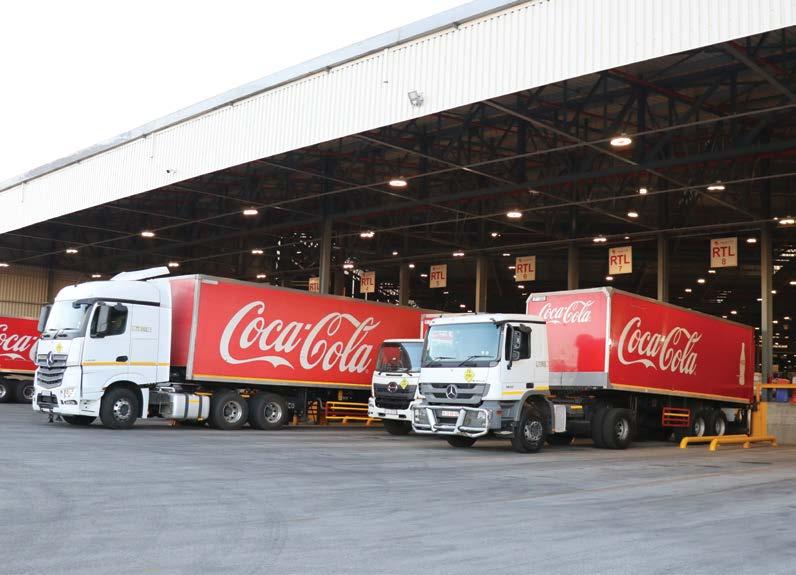
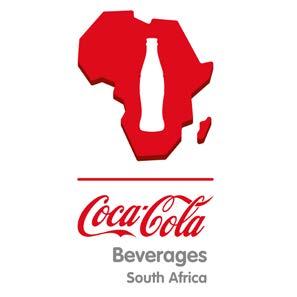
South Africa has incredible potential to stimulate massive economic growth, development, and job creation by promoting local mineral beneficiation.
By Lili Nupen, Director of Mining & Environmental at NSDV

Leveraging South Africa’s mineral wealth by transforming raw minerals into higher-value products locally would not only drive the empowerment (and employment) of historically disadvantaged South Africans (HDSAs), but could also foster entrepreneurship in industries emerging from mineral processing. However, to realise these benefits, South Africa must adopt a balanced approach that encourages local value addition without imposing rigid mandates that could deter investment and ultimately cripple the industry.
The role of beneficiation
Speaking at the 55th Annual Meeting of the World Economic Forum in Davos, President Cyril Ramaphosa emphasised the country’s focus on solidarity, equality, and sustainable development as it assumes the G20 Presidency and prepares to host the 2025 summitthe first one in Africa – in Johannesburg from 18-19 November.
The president made it clear that his platform would be leveraged to champion local beneficiation, resulting in “an additive, rather than an extractive relationship”.
“As mineral extraction accelerates to match the needs of the energy transition, the countries and local communities that are endowed with these rich resources must be the ones that benefit most. At the moment they don’t benefit much because the benefit flows out of their own countries to other locales in the world,” Ramaphosa said.
Processing raw minerals into products of greater value allows a country to retain greater economic revenue within its borders, whether through local consumption or the export of finished goods. Many countries worldwide have introduced restrictions on the export of unprocessed materials to drive this process, primarily seeking to extract greater revenue and promote socioeconomic development in their own countries.
However, while they can be beneficial, these policies often come with unintended consequences. The administrative and financial burdens associated with beneficiation pose a significant hurdle for foreign investors. South Africa's approach must carefully balance the need to boost beneficiation with the realities of its current economic and infrastructural limitations as well as strategic contractual arrangements which are of value to the country.
Despite its vast mineral wealth and relatively developed financial infrastructure, the country’s power and logistics crises have crippled several industries, making local beneficiation difficult to implement without foreign investment.
Minerals Council South Africa has stressed the importance of addressing these infrastructure challenges
before pushing for further export taxes or restrictive measures. They suggest a “carrot” approach - offering incentives to encourage beneficiation while removing barriers such as energy constraints.
South Africa's approach must carefully balance the need to boost beneficiation with the realities of its current economic and infrastructural limitations...
The case for incentives over mandates Minister of Mineral and Petroleum Resources, Gwede Mantashe, recently proposed measures to promote local beneficiation, including taxing primary mineral exports and providing incentives like tax holidays or electricity tariffs linked to commodity prices.
Given South Africa’s already financially and administratively burdensome mining regulatory framework, which poses significant challenges for those interested in capitalising on the country’s resources, mandating beneficiation would likely exacerbate these difficulties, further increasing the costs and complexities of doing business and potentially deterring much-needed investment in the mining sector.
International models of incentivised beneficiation
Looking to international examples, in a comprehensive reform, effective 8 July 2024, the Argentine Congress introduced the Promotional Regime for Large Investments (RIGI), designed to provide certainty and legal stability for long-term investments in Argentina.
A key element of this reform is the creation of the RIGI, which offers generous tax, trade, and foreign exchange benefits for 30 years to projects exceeding US$200 million in sectors such as forestry, tourism, infrastructure, mining, technology, steel, energy, oil and gas. The aim is for RIGI to attract foreign direct investment (FDI) to export-oriented sectors, which is vital, considering Argentina remains excluded from global capital markets. The RIGI has introduced a suite
of tax incentives, reduced dividend taxes, and foreign exchange benefits to encourage large-scale investments in sectors like mining and energy.
The risks of forced beneficiation: lessons from Nigeria and Zimbabwe Nigeria and Zimbabwe are prime examples of how forced beneficiation mandates can create mixed results. Nigeria’s new policy only grants mining licenses to companies with local processing plans while offering incentives like tax waivers and streamlined electricity licenses to attract investment. Zimbabwe, meanwhile, has mandated that lithium miners submit plans for local production of battery-grade lithium, hoping to capitalise on the global demand for clean energy minerals.
However, both countries face challenges in implementing these policies effectively. The risk with such mandates is that they can stifle investment if they are not coupled with robust incentives and adequate infrastructure support, as seen in other parts of Africa, too.
In essence, South Africa’s mineral beneficiation strategy should be rooted in a flexible, incentive-driven approach acknowledging the realities of its current economic landscape. By offering targeted incentives (e.g. tax breaks like a “tax holiday” for a capped number of years, reduced tariffs, or subsidised electricity, among other innovative mechanisms ) while addressing critical infrastructure challenges like energy and logistics, the country can encourage local value addition without discouraging mining investment.
At the same time, the country must carefully assess which minerals and industries are best suited for beneficiation, using a case-by-case evaluation rather than a one-sizefits-all mandate.
"The RIGI has introduced a suite of tax incentives, reduced dividend taxes, and foreign exchange benefits to encourage large-scale investments in sectors like mining and energy.

RENEWABLE ENERGY PROJECTS NEED PEOPLE, LOGISTICS, AND COMMUNITY TRUST.
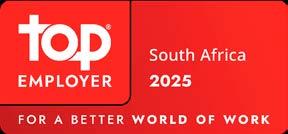

PARTNER WITH US FOR EXPERT STAFFING SOLUTIONS!



As South Africa grapples with power instability, manufacturers are increasingly turning to renewable energy solutions like solar power, battery storage, and backup systems.
Jo-Anne Arends, Product Manager at Nashua, details how these investments help stabilise costs, reduce dependence on the national grid, and support sustainability goals.
JO-ANNE ARENDS | PRODUCT MANAGER
What is the current state of power stability in South Africa, and how does it impact the manufacturing sector?
Between 2024 and 2025, South Africa notched up nearly 300 days without rolling blackouts. But recent Level 6 load shedding has reminded us that the state of the national power grid is fragile. Rolling blackouts remain a persistent risk, and power instability at the municipal level continues to disrupt operations. As such, the business case for renewable energy remains as strong as ever in South Africa’s manufacturing sector. Investing in solar and backup power solutions now can help manufacturers safeguard productivity, reduce long-term costs, and improve sustainability. The business case is boosted by falling costs for solar panels.
Manufacturing is a cornerstone of the South African economy, contributing approximately 13% to GDP and employing millions of people. However, power instability remains one of the biggest threats to the sector’s efficiency and profitability. Load shedding and unplanned outages disrupt production schedules, cause downtime, and increase operating costs. Inconsistent power supply affects supply chains, delaying deliveries of raw materials, components, and finished goods. For manufacturers operating under strict contractual obligations, power outages can lead to delivery failures, financial penalties, and reputational damage. Fluctuations in power supply can impact product consistency. Reduced production output and unplanned downtime lead to missed revenue opportunities, eroded profit margins, and a loss of market share – especially for exporters. Dependence on grid electricity not only exposes manufacturing businesses to these operational risks, but also to the added burden of rising energy tariffs.
What are the current challenges manufacturers face with electricity tariffs?
Electricity costs are increasing at a much faster pace than inflation. Since 2015, Eskom tariffs have surged by approximately 148%, with further increases of 12.7%, 5.36%, and 6.19% approved over the next three years. Municipalities are passing these hikes onto consumers and industrial customers, often with additional markups to cover their infrastructure maintenance costs. For manufacturers, these rising costs put further pressure on already tight margins. Investing in solar power, battery storage, and generator backup solutions can help stabilise energy costs and reduce dependence on the grid. With solar panel prices decreasing due to lower demand in the past year, now is an opportune moment to invest in renewable energy.
For manufacturers operating under strict contractual obligations, power outages can lead to delivery failures, financial penalties, and reputational damage.
How can manufacturers benefit from investing in solar energy?
In terms of the financial case for solar, the investment can yield both short-term and long-term payoffs. In the immediate term, a manufacturing company can harvest cost savings from relying less on diesel generators when there’s a power outage and from using solar power rather than grid power for at least some of its day-to-day electricity needs. These savings will offset some of the costs of financing solar panels, inverters and batteries. In the longer term, cost savings will accumulate as the
organisation pays off the costs of the solar investment and generates energy at relatively low additional costs. Over time, solar can contribute towards lower and more predictable operating costs.
How does renewable energy align with sustainability goals and the future of manufacturing in South Africa?
Beyond cost savings and resilience, renewable energy also supports environmental, social, and governance (ESG) commitments. Many global markets have tightened regulations on carbon emissions, making it crucial for SA exporters to demonstrate sustainability efforts. Solar power solutions help manufacturers align with sustainability goals while maintaining a competitive advantage. Advances in artificial intelligence (AI) are providing organisations with powerful new tools they can use to optimise solar investments and drive more value from solar. AI-powered solutions provide detailed insights into energy production and consumption, helping users to maximise efficiency and reduce waste. Today’s AI solutions can simplify energy management through real-time monitoring and intelligent automation. AI can, for example, automate system adjustments based on dynamic factors such as weather conditions and power usage patterns. These systems also provide accurate data for reporting carbon emissions.
What does the future hold for manufacturers who invest in renewable energy today?
Solar adoption offers long-term financial benefits by shielding manufacturers from rising electricity tariffs and unpredictable power outages. Investing in renewable solutions ensures production continuity, mitigates financial risks, and strengthens competitiveness.
With the current rate of progress too slow to meet science-based 2030 targets, the mining industry urgently needs to commit to an intensified pursuit of decarbonisation.
By Gerhard Bolt, Principal, dss+ Climate and Sustainability Practice

“Decarbonisation was one of the key topics discussed at the Investing in Africa Mining Indaba 2025 held in February, in Cape Town. We brought our own experts to this important gathering to present the findings of our research, along with solutions that will help mining companies to advance their efforts to decarbonise and future-proof their operations,” says Climate and Sustainability principal at dss+, Gerhard Bolt.
Mining is responsible for 4-7% of global direct greenhouse gas emissions. When Scope 3 downstream emissions are factored in, this figure jumps to 28% – equivalent to 19 440 megatons of CO2 – making it the second-largest emitter after agriculture, land use, and waste, which collectively account for 30% of global emissions.
The research done by dss+ shows that little is changing, with roughly the same amount being emitted per tonne of mineral output every year. This holds especially true for deep gold and platinum mines experiencing reduction in ore grades and an increasing demand for ventilation and cooling services. Technological advances are proving insufficient for offsetting increased emissions intensity.
“Based on our analysis of 52 mining companies, we found that the average annual rate of emission reductions was approximately 2% between 2018 and 2021. The current 2% annual reduction rate would result in a 40% gap to 2030 targets. The current decarbonisation rate aligns to a future of more than 2°C of warming, far above the 1.5°C target set by the Paris Agreement and associated science-based targets,” says Bolt.
“To achieve such reductions, the decarbonisation rate must increase to 4.5% per annum across the mining industry and be extended to include scope 3 emissions.”
Ultimately, there are clear, proven strategies that can help mining companies overcome barriers and accelerate their decarbonisation journey in the short-term,” he adds.
Balancing emissions reduction with the demand for critical minerals
The mining industry is faced with a dilemma: currently, companies must reduce emissions to align with decarbonisation goals and improve their environmental, social, and governance (ESG) performance; at the same time, they also need to ramp up production to meet the unprecedented demand for energy transition minerals.
“[Ramping up production] will require more energy and produce more absolute greenhouse gas emissions in the process, resulting in a situation where the current rate of decarbonisation is too slow to meet 2030 targets – an issue that is increasingly seen as problematic by the investors required to fund the exploration and expansion of mining operations,” says Bolt.
Although many mining companies have committed to decarbonising their operations, our interviews with mining executives across commodities and geographies reveal that several barriers still exist. From reporting difficulties to implementation barriers, miners described the various obstacles to decarbonising their operations.
The necessary step-change will only be achieved if leadership adopts a value-driven approach – recognising the importance of emissions reduction, fostering a supportive organisational culture, and building the right capabilities. dss+ recommends the following actions to overcome industry barriers:
Adopting internal carbon pricing aligned to net-zero targets
Creating a cultural context conducive to transformation
Adopting new data collection and monitoring frameworks
Focusing on quick wins
Taking a long-term view
Improving coordination of decarbonisation planning between sites
Co-creating conducive policy and financing frameworks
Still, says Bolt, “Ultimately, there are clear, proven strategies that can help mining companies overcome barriers and accelerate their decarbonisation journey in the short-term.”
Underpinning this is the requirement for a mindset shift within the industry: leaders must recognise the value of reducing emissions, create the appropriate cultural context, build the appropriate organisational and individual capabilities, and develop enabling structures and processes.
“Doing so can drive significant reductions that are sustainable in the long-term, thereby supporting more positive outcomes for all stakeholders.”

At the 73rd Annual General Meeting, AVBOB CEO Carl van der Riet announced the declara tion of a R13,1 billion cash benefit for qualifying members. This substantial cash benefit is issued a t the discretion of the AVBOB Board and marks the sixth special bonus declaration, follo wing the special centenar y bonus declared in 2018. The 2025. y Januar 15 effective policies, members’ to linked be will ,Benefit” Cash “65Alive the termed bonus, has policy the (provided 65 turns policyholder the when wn withdra be to designed is Benefit Cash 65Alive The been in force for at least 10 years) anytime from 15 Januar y 2025. The name “65Alive” reflects this eligibility condition. As a mutual society, AVBOB operates without external shareholders, meaning its members – AVBOB policyholders – share in the Society’s profi ts, which are distributed in addition to the standard policy benefi ts.
The sixth special bonus extends beyond funeral and life insurance. It encompasses AVBOB investment plans –both the 5 and 10-year plans. These investment plans qualify for the sixth special bonus, which will become payable upon policy maturity, as confirmed by van der Riet..
All existing policyholders will receive an annual communica tion letter via post, SMS or email, outlining their policy benefits and an y a pplicable bonuses and/or 65Alive Cash Benefit. In order to guide this process, it is crucial that AVBOB has up-to-date contact details for its members. Therefore, policyholders are encoura ged to review and upda te their information on the AVBOB self-ser vice portal: https://selfser vice.a vbob.co.za/connect/home.
Membership in a mutual society provides valuable benefits through long-term membership offerings. A part from the 65Alive Cash Benefit, AVBOB members can also benefit from Member Rewards and from FREE funeral benefits* valued a t up to R22 500 (*Terms and conditions a pply. FREE funeral benefits only a pply if AVBOB Funeral Ser vice conducts the funeral).
The Member Rewards programme presents a renewed opportunity for AVBOB members to receive value for their lo y alty to AVBOB through a carefully selected network of benefit partners and a variety of rewards to meet the daily needs of AVBOB members.
Van der Riet said AVBOB’s mutual model represents a shared commitment to prosperity, ensuring tha t our members fully benefit from o wnership and value crea tion. “By reinvesting our profits to enhance member ser vices and policyholder benefits, we continue to prioritise their well-being. AVBOB is proud to announce this substantial cash benefit, reaffirming our dedication to sharing the Society’s success with those who ma tter most – our members,” he said.
AVBOB is 106 years old. The AVBOB Group comprises AVBOB Mutual Assurance Society, which provides insurance products, and two subsidiaries – AVBOB Funeral Ser vice and AVBOB Industries, which manufactures our coffins and funeral ware. Being a mutual means tha t AVBOB has no external shareholders but instead has members who receive a share of AVBOB’s surplus profit Our members are our policyholders, and our mutual sta tus drives our purpose.
For more details on the 65Alive Cash Benefit, visit: https://www.avbob.co.za/general/65alive or call the AVBOB Call Centre at 0861 28 26 21 for assistance.
Siemens predicts Africa will lead mining automation, with 40% of equipment self-driving by 2040 and major sites nearing full automation for safer, more efficient operations.
Siemens
Sub-Saharan Africa
CEO, Sabine Dall’Omo, unpacks five modernisation trends that will shape African mining by 2040.
Trend 1: The autonomous machinery revolution will up the game in sophisticated mining.
Research by Siemens indicates that about 30-40% of machinery in South African mining will be autonomous by 2040. From self-driving trucks and autonomous drillers, to drones and robotic sensors, technology will be minimising human involvement in hazardous tasks at the continent’s more sophisticated mines. Redefining every facet of mining operations, technologies such as AI and Internet of Things (IoT) systems will integrate machinery, collect data, optimise workflows in real time, reduce costs and protect workers from high-risk activities. One current example of how this trend is manifesting is the self-driving haul trucks that are used in South Africa’s iron ore and platinum mines, and drones that are used for aerial surveys and inspections of mines.
Trend 2: AI and Big Data will step out of its baby shoes.
Artificial intelligence (AI) and Machine Learning (ML) have already become the backbone of decision-making in mining operations, but by 2040 its power and accuracy will be astounding. Various experts Siemens interviewed for its research foresee that visualisation tools based on AI, Augmented Reality (AR) and Virtual Reality (VR) will become the tools of choice to help miners find minerals and work out better operational strategies. Wearable technologies will also guide miners with real-time information to better manage their operations. AI-powered tools will be used across the continent to analyse massive datasets to optimise extraction methods, improve mineral discovery rates, protect the environment around mines with much greater precision and even predict equipment failures.



Trend 3: Digital twins will bring the power of simulation to solution-seeking.
The research also indicates that by 2040, up to 40% of South African mines will be using digital twins to simulate processes, detect danger and determine the next best actions, especially in rough terrain. Digital twins are virtual replicas of physical mining sites and allow engineers to simulate multiple mining scenarios and weigh up opportunity-cost more effectively. Engineers can then make the best proactive decisions to reduce operational risks and maximise output in their mining operations.
Coupled with IoT-enabled sensors, digital twins will allow engineers to gain simulated real-time insights into machinery performance, mining safety, workforce activity and the impact of environmental conditions and natural or climate-change related disasters. The dual benefit of these interconnected simulation and monitoring systems is that it can help ensure much greater accuracy, compliance and innovation around safety and environmental standards.
Trend 4: Drones and robotics will be the android eyes, ears and hands in modern African mining. Siemens further forecasts that by 2035, an estimated 35% of mining jobs will be automated by a dizzying array of technologies, and that 50% of jobs will require less human interaction by 2040. Drones and robots will revolutionise various inspection and maintenance tasks on mines at an exponential rate. Acting as eyes in the sky for mines in urban, remote and even dangerous areas across Africa, drones that are equipped with advanced imaging technologies will be used to conduct geological surveys, monitor mine stability, and identify a range of risk factors and hazards. On the ground, robots, with their mechanical hands, eyes and ears, will handle a range of dirty, dangerous and high-precision tasks, including ore sampling and equipment maintenance in hard-to-reach places. This will transform the efficiency of mines where human access is impractical or downright dangerous.
Trend 5: The Fourth Industrial Revolution (4IR) in mining will require reskilling for a more creative human future.
With a rapid decline in direct human interactions on mines, the reskilling of mine workers to engage in more meaningful tasks, in line with other industries that are also
embracing the 4IR, will become a dominant theme in mining. The shift presents an opportunity to re-focus human efforts on creative, skilled, and less physically taxing work. As automation transforms the mining industry, the workforce must evolve alongside it to be able to understand and operate the AI, ML, IoT, AR, VR, drone and robotic tools of the trade. Traditional roles will be replaced by positions in robotics management, data analytics, cybersecurity, and digital engineering – opening up an array of opportunities for the gaming and tech- savvy generation of today to fulfil the hightech mining jobs of the future.
Africa can lead the charge if it invests in digital transformation

Despite many advantages, the rise of autonomous mining technologies has its challenges –but challenges always present opportunities. For mines to embrace the future and ensure their own competitiveness by 2040, they need to invest substantially in their digital transformation in this decade. This includes the reskilling of workers; significant infrastructure upgrades; rapid high-level digitisation, which includes investing in robust, inter-operable systems, and improved cybersecurity and operational risk management to safeguard their highly interconnected digital systems. Autonomous machinery represents a pivotal step in futureproofing African mining, and momentum is picking up fast. It is critical that mines stay ahead of the curve. As a continent known for its ability to leapfrog even the developed markets in terms of technology adoption, Africa has an immense opportunity to lead the global mining industry in automation-enabled safety, efficiency and sustainability. Africa’s mining progress could well outpace many parts of the world in the next decade and a half.

VUKA Group is driving growth and sustainability across Africa through platforms like Enlit Africa, among others. The hybrid event, blending digital and in-person experiences, returns to Cape Town on 20-22 May 2025 with exhibits, networking, and expert talks on energy and decarbonisation.
VUKA CEO David Ashdown shares his vision for Africa’s energy future and cross-industry collaboration.
VUKA Group has positioned itself as a key player in connecting industries through events like Enlit Africa. Beyond energy, how do you ensure these platforms drive real impact across multiple sectors?
We operate across industries such as energy, mining, mobility, the green economy, and retail. Our methodology focuses on connecting organisations and people through both digital and in-person activations, all year round. These platforms allow companies to discover commercial opportunities across multiple sectors. For example, technology partners in retail platforms often find synergies with energy, such as payment gateways for energy consumers. By ensuring our portfolios are complementary, we create meaningful connections that support business development and lead generation.
At VUKA Group, we support this with digital tools to maintain connections and facilitate ongoing collaboration.
How do you balance the diverse needs of these sectors while maintaining a strong, unified vision?
We approach this by identifying synergies between industries. For example, the technologies in the energy sector are now being applied in mining. Our method integrates both in-person and digital touchpoints to connect stakeholders across different sectors. This allows us to maintain a unified approach while tailoring our solutions to meet the specific needs of each industry. The VUKA Group ecosystem also supports year-round engagement, keeping companies connected through content, marketing campaigns, and online activations.
The energy transition is key to Africa’s future. While renewable energy will play a significant role, it won’t provide the total energy required in the short term.
With Africa’s growing energy demands and the push for sustainability, which key trends do you see shaping the continent’s energy future, and how is Enlit Africa facilitating progress in these areas?
The energy transition is key to Africa’s future. While renewable energy will play a significant role, it won’t provide the total energy required in the short term. We foresee a mixed-use solution that includes renewable energy, gas, and even nuclear energy through small modular reactors. These provide a safe and secure option to complement renewable sources.
What role do industry events like Enlit Africa play in ensuring collaboration between policymakers, investors, and innovators?
Events like Enlit Africa play a crucial role in bringing together key stakeholders – policymakers, investors, and innovators – under one roof to collaborate and cocreate solutions. In-person events allow for meaningful face-to-face interaction, which is essential for fostering business relationships and driving real-world outcomes.
How is VUKA Group adapting to new digital trends and audience expectations to stay ahead?
The pandemic taught us the importance of digital resilience. At VUKA Group, we’ve diversified our portfolio to include a mix of live events and digital activations. We focus on providing year-round visibility for our clients, not just at annual conferences. Our digital ecosystem allows us to create campaigns that reach decision-makers through multiple channels, from live events to paid media, webinars, and content creation. This helps ensure consistent engagement and storytelling, which drives business outcomes for our clients.
Join the conversation
Enlit Africa 2025 will take place at the CTICC in Cape Town, bringing together thought leaders, innovators, and key stakeholders from across the energy sector. Focused on sustainable solutions, renewable energy, and technological advancements, the event offers a platform for impactful discussions and collaboration. With a vision to accelerate Africa’s energy transition, Enlit Africa 2025 will be a hub for exploring new opportunities, exchanging ideas, and driving the region toward a cleaner, more inclusive energy future.


Africa faces a tough reality: clean water and reliable energy are deeply connected, yet both remain out of reach for millions.
By Sarah van Heerden, Co-Founder of The Unity Water Foundation
Water infrastructure – purification, distribution, and sanitation – depends on a steady power supply. But what happens when the power goes out?
Pumps fail. Treatment plants stall. Communities go dry. It doesn’t have to be this way. Renewable energy offers real solutions, especially in off-grid and water-scarce regions. But technology alone won’t fix the problem. Without policies that treat water and energy as two sides of the same coin, Africa’s water crisis will persist, no matter how many wells get drilled.
When the lights go out, the water stops flowing
Africa’s water supply is at the mercy of its fragile energy infrastructure. Power cuts are common, hitting everything from city water systems to rural boreholes. In South Africa, rolling blackouts have plagued the country for years. When the grid goes down, pumps shut off, leaving thousands without water for hours - sometimes days. Even when the power is on, it’s often not enough. A study found that most African utilities provide less than 16 hours of water service per day. Meanwhile, energy customers experience around 40 hours of blackouts each month. That means water flows inconsistently at best. And in hospitals, schools, and homes, that’s more than an inconvenience –it’s a crisis.
Then there’s also the issue of over-reliance on hydroelectric power. Climate change is making droughts more frequent and severe, turning
“Nonprofits play a crucial role in this fight. They’re not just delivering clean water - they’re driving innovation, empowering communities, and challenging outdated systems.”

water reservoirs into ticking time bombs. Take Lake Kariba, for example. This massive artificial lake supplies hydroelectric power to Zambia and Zimbabwe. But when the prolonged drought dropped water levels to record lows, it triggered a full-blown energy crisis. Less power meant weaker water infrastructure, and communities felt the impact almost immediately.
Can renewable energy help?
Diversified sources of renewable energy are changing the game. Solar-powered desalination, wind-driven pumping systems, and small-scale hydro solutions are helping communities break free from unreliable grids. These innovations are giving hope to regions that have struggled with water access for generations.
Take solar desalination. It turns seawater into drinking water using nothing but sunlight. In Morocco, a massive desalination plant in Agadir is already producing 275 000 cubic metres of clean water daily –all powered by wind and solar energy. Similar projects are popping up across the continent, proving that sustainable solutions can work at scale.
Then there are mobile solar water purification units. Companies like Solar Water Solutions have created self-sufficient systems that deliver clean water without power lines or complex infrastructure. These setups are particularly useful in remote areas where traditional water treatment facilities don’t exist. Instead of waiting for grid expansion (which could take decades), communities get an immediate, independent solution.
Bridging the gaps in wash and energy Governments and private companies aren’t the only players tackling Africa’s water crisis. Nonprofits working in the WASH (Water, Sanitation, and Hygiene) sector are on the front lines, helping communities access clean water despite energy challenges. But it’s not easy.
Many nonprofit-led projects rely on energy-intensive solutions like boreholes, purification stations, and sanitation systems. Without a steady power source, these projects struggle to stay operational.
Some of the biggest hurdles nonprofits face:
• Unreliable electricity: A solar-powered borehole sounds great, but what happens when the panels degrade or a storm knocks them out? If there’s no backup system, the entire community loses access.
• High upfront costs: Renewable energy solutions save money in the long-term, but the initial investment is steep. Many nonprofits operate on tight budgets, making large-scale solar or wind projects difficult to fund.
• Red tape and bureaucracy: In some countries, setting up a simple solar-powered water project requires months of paperwork and approvals.
• Lack of technical skills: Even the best-designed system needs maintenance. However, many rural communities do not have trained technicians to repair solar panels, pumps, or filtration systems. Without long-term training programmes for people within those communities, these solutions could fail within years.
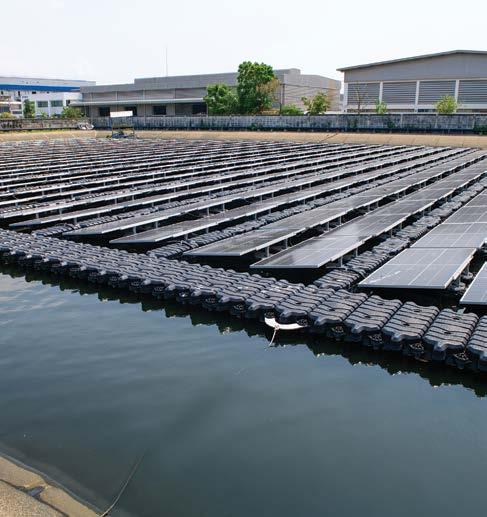
Solar-powered desalination, wind-driven pumping systems, and small-scale hydro solutions are helping communities break free from unreliable grids.
Adapting and innovating…
Despite the challenges, nonprofits are finding new ways to keep the water flowing – even in the toughest conditions.
• Solar water pumps: Organisations like WaterAid and World Vision Africa are using solar-powered water stations to reduce reliance on unstable grids.
• Private sector partnerships: Nonprofits are teaming up with renewable energy firms to install low-cost solar desalination units.
• Local training programmes: Some organisations are training community members to maintain their own water-energy systems, creating long-term sustainability.
• Policy advocacy: Nonprofits aren’t just building wells; they’re pushing for smarter laws and regulations. Groups like the African Water Association (AfWA) are fighting for policies that integrate water and energy planning at a national level.
Working together for real solutions
Africa’s water and energy crises are too big for any one group to solve alone. Governments, businesses, and nonprofits need to work together to create sustainable, long-term solutions.
Funding is key. Philanthropic investments and corporate social responsibility (CSR) programmes should focus on scalable solutions, rather than one-off projects. Every water project should come with a strategy for energy resilience and local sustainability. One simple way to do this? Invest in communities by training residents to maintain their own water infrastructure.
Policy changes matter, too. Water and energy policies can’t exist in silos anymore. Governments need frameworks that encourage renewable energy use in water infrastructure. That means cutting through bureaucratic red tape, offering incentives for offgrid energy solutions, and investing in community-driven programmes. And it’s not just about government action –businesses and nonprofits need to play an active role in shaping policies that work for everyone.

But beyond the practical steps, there’s a bigger issue at play: governance. Strengthening governance and accountability must be part of the equation, or any progress will be short-lived.
"Governments, businesses, and nonprofits need to work together to create sustainable long-term solutions."
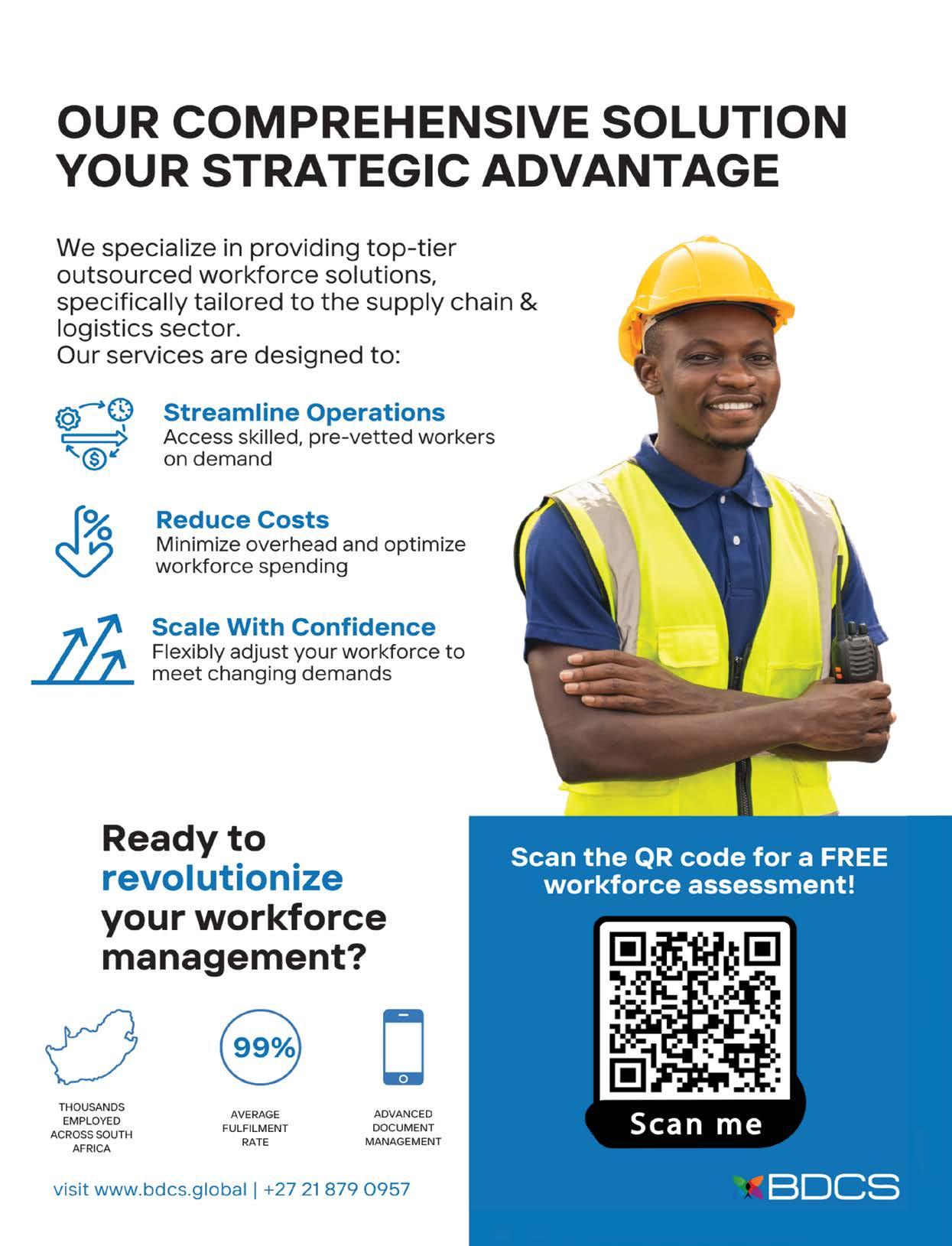
Michelin’s Total Cost of Ownership (TCO) approach helps fleet operators cut costs and reduce their carbon footprint through smarter tyre management, fuel efficiency, and predictive maintenance. In this Q&A, Charl Lensley, B2B On Sales Director at Michelin, shares how a TCO mindset drives long-term profitability and sustainability in the transport industry.
CHARL LENSLEY | SALES DIRECTOR
How does Michelin’s TCO approach help fleet operators shift from short-term cost-cutting to long-term financial and environmental sustainability?
Michelin’s TCO approach helps fleet operators transition from short-term cost-cutting to long-term financial and environmental sustainability by focusing on value-driven decision-making rather than just upfront expenses - in other words, by looking at their business with a different lens and breaking down the silos between the different operating expenses. Here are some of the areas of your business Michelin will play a role in:
• Optimising tyre performance and longevity by assisting fleet operators with maintenance programmes (with tyres and around tyres) to extend the mileage of the tyres in first life and to improve fuel efficiency, leading to reduction in replacements and downtime. Retreading programs help fleets maximise tyre lifespan, lowering overall tyre costs.
• Fuel efficiency and CO2 reduction: Michelin low rolling resistance tyres reduce fuel consumption,


which is one of the largest expenses for fleets. The reduction in fuel consumption leads to reduced carbon emissions, aligning with sustainability goals.
• Predictive maintenance and digital solutions with Michelin Connected Fleet, providing realtime data on tyre pressure, driver behaviour and more, helping fleets reduce breakdowns and maintenance costs, and improve operational efficiency.
• Total cost transparency: Instead of focusing on initial tyre costs only, Michelin provides a TCObased analysis that accounts for the entire life cycle cost, including fuel savings, maintenance, and longevity. This helps fleet operators make smarter investments that yield savings on their operational cost and improve their bottom line.
To summarise, by shifting the focus from short-term expenses to long-term value, Michelin’s TCO approach helps fleets achieve lower operating costs, improved efficiency, and a smaller environmental footprint –leading to financial and sustainability success.
With transport being the third-largest carbon-emitting sector in South Africa, how can adopting a TCO mindset help fleet operators reduce their carbon footprint while maintaining profitability?
Fuel accounts for up to 40% of a fleet’s operating cost and one of the major contributors to carbon emissions. By investing in fuel-efficient tyres such as low rolling resistance tyres, fleets can reduce fuel usage, leading to lower CO2 emissions, increased profitability, and sustainability. But there are many different aspects of their operation a fleet operator can focus on to reduce fuel consumption; driver behaviour, fleet and tyre maintenance practices and load distribution are just a few. Notably, 80% of CO2 emissions from tyres occur while they are in use, with approximately 30% of fuel consumption stemming from the tyres’ rolling resistance.
Many fleet operators focus on major expenses like fuel and salaries – how can they better integrate tyre selection into their cost-saving strategy to maximise efficiency?
With a strong focus on lower rolling resistance tyres, as mentioned before. Also, by extending tyre life and minimising waste through regrooving and retreading; preventing costly breakdowns through predictive tyre and vehicle maintenance; transitioning to greener fleets without compromising on profitability, and by complying with emissions regulations while maintaining a competitive edge.
Fleet owners often rely on cost-per-kilometre (CPK) to manage tyre expenses. Why is this method insufficient, and how does the TCO approach offer a more accurate measure of operational efficiency?
CPK focuses only on the direct tyre cost, ignoring hidden expenses like fuel efficiency, tyre lifespan, tyre durability, casing durability, vehicle and driver safety, maintenance cost and downtime, all of which significantly impacts profitability. TCO considers all of the above, including environmental impact in providing a complete cost of ownership. Fleet operators typically look at all these expenses in isolation, not realising their collective impact on the business’s efficiency, profitability and sustainability. Compared to fuel, tyres may seem a smaller expense, but they have a huge impact on the fuel efficiency of the fleet, the safety of
their assets and people, and the risk associated with breakdowns on the road.
How does MICHELIN Connected Fleet and real-time data analytics help transporters make informed decisions that improve efficiency and sustainability?
Fleet managers today need a fleet management partner that provides real-time data analytics to optimise efficiency, reduce costs, and enhance sustainability. MICHELIN Connected Fleet’s services and solutions help transporters make proactive, informed decisions by improving operational efficiency, driver performance, cost control, and security.
Through route optimisation, fuel reduction, and minimised downtime, fleets operate more efficiently. In-cab coaching and real-time driver training encourage safer and more fuel-efficient driving habits, helping reduce risk and improve overall performance. Predictive maintenance prevents unexpected breakdowns, extends vehicle life, and reduces maintenance costs.
Security and compliance are also critical for fleet operations. Embedded intelligence automates trip management, helping to minimise high-risk situations such as unauthorised stops and hijackings. Additionally, smart cameras provide real-time visibility into road conditions, driver behaviour, and security incidents, enabling fleet managers to identify risks early and take proactive measures to enhance safety.
One of the key solutions offered by MICHELIN Connected Fleet is the Trailer Management System, which continuously monitors tyre pressure, brake performance, and load conditions in real time. This allows fleets to optimise tyre life, reduce fuel consumption, and minimise operational risks by preventing mechanical failures. It also helps lower maintenance costs while extending trailer lifespan, improving overall cost efficiency.
As fleets move toward more sustainable practices, MICHELIN Connected Fleet supports this transition by leveraging real-time data to drive fuel efficiency, lower CO2 emissions, and optimise vehicle performance. These insights align with TCO strategies, ensuring fleets achieve sustainability goals without compromising profitability.

Infra Impact Investment Managers’ Local Community Trust Debt Fund, backed by €20 million from German development bank KfW, is ensuring that dividends from renewable energy projects benefit local communities, rather than being consumed by debt repayments.
As South Africa targets 19GW of renewable energy by 2030, the Infra Impact Investment Managers’ Local Community Trust Debt Fund initiative plays a crucial role in bridging the annual R535 billion investment gap. Its first transaction, with a Northern Cape community trust, marks a significant milestone in driving real, long-term impact.
To ease the debt burden and make funds more readily available for community upliftment projects, Infra Impact Investment Managers has launched an impact investing initiative. With the €20 million from Germany’s KfW, the fund is steadily progressing towards its R2 billion target, making a lasting impact on South Africa’s renewable energy sector by refinancing investments.
As the world’s 10th-largest producer of coal-generated electricity, South Africa faces considerable challenges in meeting its global commitments to combat climate change. At the same time, the country’s vast solar and wind resources must be harnessed through initiatives such as the Renewable Energy Independent Power Producer Procurement Programme (REIPPPP). These transformative targets must be achieved without driving electricity prices to unsustainable levels, and in a socially just and equitable manner, while at the same time securing large-scale investment in infrastructure and grid capacity.
To reach the country’s goal of 19 GW renewable energy generation by 2030, the first 3.6GW capacity was financed

by the South African fiscus. However, these public funds won’t cover the entire 19 GW capacity (Source: WWF SA). Alternative sources of funding such as private investors will bridge a critical financial gap, estimated at an additional R535 billion per year, to meet the 2030 target (Source: Climate Policy Initiative).
The REIPPP envisages allocating a certain amount of the proceeds of a renewable energy power plant towards the development of rural communities in that area and addressing their socio-economic issues and injustices. Supporting and uplifting communities is an essential part of a just energy transition.
Unfortunately, even though the renewable energy sector has grown into a vital economic driver, to date, local communities have not yet seen the brickand-mortar realisation they were promised. The high interest rates charged by funding institutions means the dividends community trusts receive from these projects are immediately repurposed to repay the community trust’s loan capital and interest. The result is that over a long period, no funds are received by these communities for much-needed community infrastructure such as school buildings, community spaces, and sanitation.
Providing renewed hope
To address this concerning issue, Infra Impact, a leading investor across various sectors of the infrastructure asset class, has created the Local Community Trust Debt Fund. By refinancing community equity at much lower interest rates, financial liquidity is made available for community projects. This enables communities to refocus their efforts on implementing social projects that will provide tangible value as community-held assets, instead of simply servicing debt.
The Fund successfully concluded its first refinancing transaction, partnering with a local community trust in the Northern Cape to refinance its loans used to acquire equity in three operational solar PV projects.
“We are excited to collaborate with the local community trust in the Northern Cape on our first investment,” says Bulelwa Ntshingwa, Portfolio Manager of the Fund. “We look forward to engaging with more Independent Power Producers, helping to create value for Community Trusts, and improving the lives of the people in those communities.”
The fund was launched in December 2023, with the first commitment from the German development bank, KfW. A second round of capital raising has since started, with the ultimate goal of securing an additional R1.6 billion from institutional investors.

As South Africa’s renewable energy landscape continues to evolve, many industrial players are considering their options for transitioning to sustainable power sources, primarily solar.
By John Taylor, Head of Large C&I and M&A at Yellow Door Energy
Although nearly 300 days without load shedding may have reduced perceptions of solar as critical to securing consistent power, decarbonising – to avoid looming carbon border taxes – is increasingly driving the transition.
Companies in the commercial and industrial sector account for around two-thirds of the world’s demand for
electricity. This heavy usage will expose companies in this sector to high export-related taxation, unless they significantly decarbonise.
Over the past few months, we have engaged with several stakeholders who are considering their transition, and the outlook for the year ahead is both promising and challenging.
The lack of available grid connections for grid-tied solar power systems, and the uncertainty surrounding this challenge, remains a critical issue for the solar energy sector and its customers. Given the uncertainty over the timeline for connection, industrial customers are frustrated at the pace of renewable energy project roll-outs by developers.
Companies in the commercial and industrial sector account for two-thirds of the world's demand for electricity.

For both developers and their customers, the ideal outcome over the next two years will be to see the government and Eskom focus on procuring additional grid capacity, finalising curtailment rules, bringing certainty to the grid connection process (IGCAR), and introducing a short-term physical market for renewable power.
With news that the government is now taking encouraging steps towards private sector participation in grid development, it is hoped that the issue will be resolved as quickly as possible, enabling more industrial concerns to unlock a smooth transition to renewable energy implementation.
What are the options for transitioning to solar power?
Various procurement options exist, including wheeling (in front of the meter), on-site (behind the meter), energy as a service, EPC only, and power purchase agreements (PPAs) from a Yellow Door Energy perspective.
Let's examine why a PPA is often the simplest and most suitable solution: Independent power producers (IPPs), such as Yellow Door Energy, primarily work with large companies that have a high demand
for energy. The IPP finances, designs, procures, builds, commissions, operates and maintains its customers' solar power renewable energy systems, typically comprising a solar power plant combined with a battery energy storage system (BESS).
There is an increasing realisation of the critical role BESS plays in stabilising load and enabling grid/tariff arbitrage, with a general acceptance of the additional costs required.
"The IPP finances, designs, procures, builds, commissions, operates and maintains its customers' solar power renewable systems..."
For customers, a PPA offers three key benefits from day one:
• Significant energy cost savings, with the means to lock in long-term energy costs – a reassuring business fundamental as Eskom continues to push for its unpopular tariff hikes.
• Zero capital expenditure for implementation: Customers pay only a monthly solar bill once their solar plant starts generating electricity. The PPA undergoes a Build-Operate-Own-Transfer (BOOT) arrangement; also called an energy performance contract (EPC) in some countries. Think of a PPA as a kind of “rent-to-buy” arrangement; once the term of the PPA concludes, the customer owns their solar power plant in full.
• The reassurance of an ongoing partnership with experienced solar energy experts: Today, Yellow Door Energy has over 350MW of awarded solar projects in the Middle East and Africa. Together with
As the Head of Large Commercial & Industrial and Mergers & Acquisitions at Yellow Door Energy South Africa, John is responsible for driving the development and acquisition of large-scale renewable power solutions in the country. He has over 20 years' experience leading and advising companies in the power and infrastructure sectors across Africa.
a team of 120+ dedicated solar and energy storage experts, we are well positioned to help businesses reach their Net Zero targets.
When deciding between different options of going solar, business leaders should consider the following factors:
• The ROI on your own business operations versus investing in solar: Should you invest your own money in a non-core business activity when, with that same amount of money, you can generate higher ROI when investing in your business operations?
• Debt: Should your business get into debt to finance a solar energy plant, or can someone else do this on your behalf?
• Internal resources: Do you have the internal expertise and time required to supervise and manage multiple contractors?
These are important considerations for business leaders, and a PPA may be the solution for your business.
In South Africa, Yellow Door Energy’s customers are energy-intensive, Eskom-connected users across all industries, requiring a minimum of 5MWp capacity with a regular operational schedule. These customers can typically enjoy significant savings in comparison to a grid-connected-only solution.
With government and Eskom now looking to resolve grid congestion with the assistance of the private sector, many more industrial consumers should soon be able to implement a hassle-free transition to cleaner and cheaper solar power.
A PPA can provide the most practical springboard to do so.
Yellow Door Energy (YDE) provides cost-competitive renewable energy solutions to leading commercial and industrial businesses in South Africa. With flexible contract terms in power purchase agreements (PPAs), YDE’s team of dedicated energy experts delivers projects swiftly, safely and sustainably. Backed by strong B-BBEE credentials, YDE is committed to helping businesses lower electricity costs, decarbonise their operations and advance South Africa’s just transition.

FutureCoal launched the Southern Africa Chapter, with Seriti Resources Group CEO Mike Teke serving as its inaugural Chairman.
The Chapter comprises the top four African coal nations: South Africa, Mozambique, Zimbabwe, and Botswana. These nations collectively hold 150 billion tonnes of coal reserves, placing them among the world’s top coal-rich regions.
The regional initiative will build upon FutureCoal’s global advocacy efforts, which champion sustainable transformation across the entire coal value chain. It will unite industry leaders, governments, and international partners to ensure consistent and clear policies and strategies which enhance the responsible and sustainable use of coal in critical sectors such as power, heavy industry, critical minerals, and hydrogen.
“Launching the inaugural FutureCoal Chapter in Southern Africa, is a testament to our unwavering commitment and leadership in uniting the value chain and reshaping coal’s future regionally and internationally,” stated Mike Teke.
The Chapter, which already has 13 inaugural members from across the region, is underpinned by FutureCoal’s Sustainable Coal Stewardship (SCS). The SCS roadmap emphasises innovation and technologies that modernise the value chain to achieve mutually beneficial economic and environmental outcomes that serve both national and global ambitions.
Mike Teke added: “We now have a chance to follow the beat of our drum. We are nations blessed with a valuable resource, and we will be stronger together. I
am calling on more of my peers across coal enterprises to publicly join this alliance that leads a pragmatic and realistic discussion on coal’s inclusion. If we are to truly support our communities and foster their prosperity, we must recognise that the responsibility lies with us to drive this transformation so that we can achieve the best for our nations and our continent.”
Despite the crucial role coal plays in modern life and its contribution to poverty alleviation, many remain unaware of these facts and lack an understanding of how biased policies that exclude coal could leave a nation more vulnerable, and falling behind.
I am calling on more of my peers across coal enterprises to publicly join this alliance, which leads a pragmatic and realistic discussion on coal’s inclusion.”
FutureCoal CEO Michelle Manook, added: “FutureCoal’s SCS roadmap serves as the foundation to reverse this trend by facilitating responsible policy and investment decisions that support modernisation and transformation. The Chapter members, led by Chairman Mike Teke, are to be commended for their proactive approach. Our shared goal is prosperity for all. This isn’t about choosing one path over another; it’s about empowering regions to chart their own course and fostering their responsible growth.”
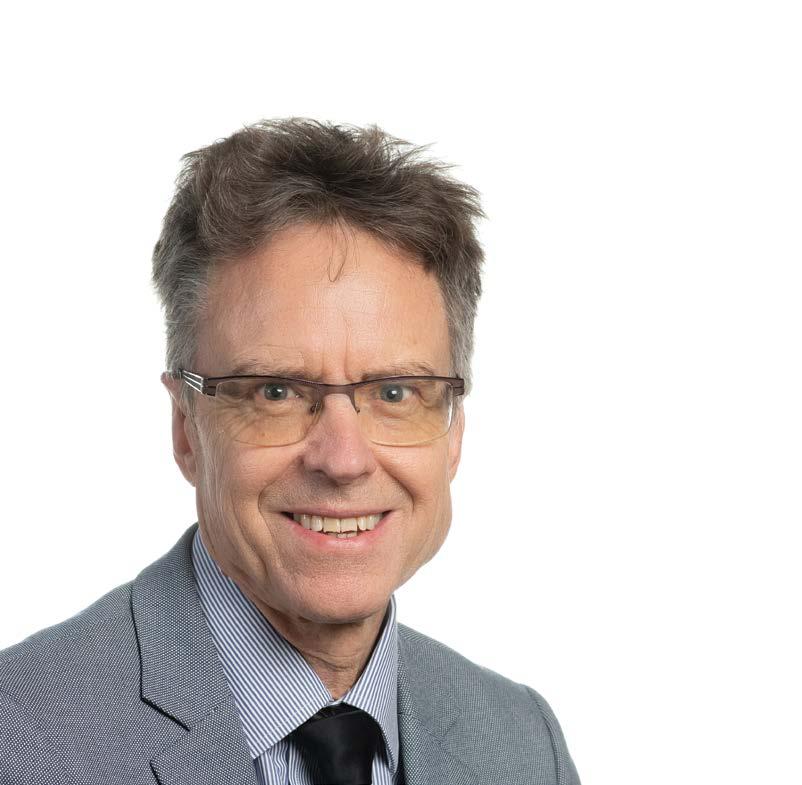
Professor David Walwyn, a leading academic at the University of Pretoria’s Graduate School of Technology Management, is shaping the conversation on Africa’s energy transition. With a background in chemical engineering and a PhD in organic chemistry from Cambridge, his work focuses on sustainability, renewable energy, and innovation policy. Here he unpacks the game-changing technologies, industry collaborations, and policy shifts that can accelerate Africa’s transition to sustainable energy.
DAVID WALWYN | PROFESSOR IN ENGINEERING AND TECHNOLOGY MANAGEMENT
What are the most promising energy technologies that can accelerate Africa’s transition to a more sustainable energy system?
Wind and solar photovoltaic energy are presently the two most promising technologies for the acceleration of Africa’s energy transition and are at the centre of the energy strategies for many African countries. The continent has vast renewable energy resources, particularly solar energy. A recent study has shown that at least 76% of the continent’s energy needs could be derived from renewable energy by 2040. Furthermore, the unit cost of energy from onshore wind and solar photovoltaics has fallen by 80% over the last decade, and these generation sources are now more competitive than fossil fuel-based generation technologies as well as nuclear.
In recognition of this, in 2022 the African Union adopted the “African Common Position on Energy Access and Just Energy Transition”, which specifies an inclusive process in the continent’s transition to clean energy, an approach which accommodates the diverse needs and resources of African nations and communities, allowing each country to develop its own energy transition strategy while simultaneously prioritising the expansion of the renewable energy contribution.
How can research institutions like UP collaborate with industry to bridge the gap between innovation and implementation?
Several of the technological innovation systems that will form the core of future energy systems are still in early development stages. For instance, green hydrogen is
severalfold more expensive than grey hydrogen, and investments in proposed green hydrogen projects are being delayed until the techno-economics are more favourable. As centres of research and knowledge generation, universities like UP have a key role to play in identifying more cost-effective processes for green hydrogen and demonstrating that these technologies are reliable at large scale.
Ultimately, implementation of the new energy technologies will require the participation of the private sector, especially in large-scale projects with significant risk and a platform of technical expertise. Universities already have links with energy companies and can provide both research services and technical expertise to support feasibility studies and implementation plans, thereby reducing the risk for the private sector and ensuring that these projects are successfully completed.
Eskom, is developing battery energy storage capacity of about 400MW, about 1% of the total system demand.
What lessons can Africa learn from global energy transitions, and how can the continent tailor these insights to its unique challenges? All countries are learning constantly about the challenges and costs of the energy transition. For instance, although several of the European Union countries have achieved significant reductions in carbon emissions per unit of energy, these advances have led to higher energy costs for households. Responsible for less than 4% of global carbon emissions, Africa does not need to be a leader in the area of technology development and decarbonisation but can afford to follow best practices as they emerge from the Global North and China.
Responsible for less than 4% of global carbon emissions, Africa does not need to be a leader in the area of technology development and decarbonisation but can afford to follow best practices as they emerge from the Global North and China.”
What role does energy storage play in stabilising Africa’s power grid, and what are the latest advancements in this field?
Energy storage is already a major factor in national energy systems. In South Africa, pumped storage and diesel turbines are used daily to balance demand and supply. Large coal-based power stations are unable to respond in real time to system fluctuations caused by sudden changes to demand and supply (such as the intermittency of renewable energy technologies and evening peak loads). Other countries in Africa use gas turbines or hydroelectricity to stabilise their power grids.
As the proportion of renewable energy to the total energy system rises, load balancing and storage technologies will be even more important in maintaining energy resilience. Battery energy storage is already becoming a feature of energy systems, albeit at small scale. For instance, in South Africa, the national utility,
A key consideration for Africa is grid architecture and the optimal level of distributed versus centralised energy generation. Although centralised systems have historically had the cost advantage of scale, localised energy generation can be competitive, and it is possible that microgrids will be preferred over national grids. In this area, African countries will have to find their own solutions, since the Global North have extensive grid investments and have liberalised their energy markets to ensure that supply is made available to consumers at competitive costs.
How do we ensure that energy transformation in Africa remains equitable and benefits all communities, especially those in rural areas? Energy justice and equity is at the core of the now widely adopted approach of a “just energy transition”, a process which aims to transition from fossil fuels to clean energy sources in a fair and equitable way. For instance, South Africa has adopted the Just Energy Transition (JET) Partnership and the JET Investment Plan. Other countries have similar documents. The intent of these plans is to proactively address the negative consequences of an energy transition, such as loss of jobs in fossil-fuel extraction industries (coal miners and oil workers) and neglecting disadvantaged communities. The plans outline necessary investments in retraining, in community participation and other areas, to ensure that these negative consequences are avoided or mitigated. It is recommended that all countries in Africa should have similar strategies so that we can move forward on an ethical and equitable basis.
As the transportation sector rapidly evolves, it is becoming increasingly pivotal in driving global supply chains and industrial operations. With digitalisation accelerating, sustainability pressures rising, and complex supply chain demands mounting, businesses are under significant pressure to adapt quickly or risk falling behind.
To help companies navigate this ever-changing landscape, RS, a global provider of industrial solutions, has launched its latest Transportation Sector Report, offering a comprehensive analysis of the forces reshaping the industry. It highlights both the challenges faced by businesses and key opportunities to fuel growth and innovation in the transportation sector.
Industry insights
Titled "Moving in the Right Direction: Driving an Interconnected World at a Local Level", the report takes a deep dive into the current state of the transportation industry, examining the powerful trends that are shaping the market and providing actionable insights for businesses seeking to stay ahead of the curve.

The report identifies five defining characteristics of the modern transportation industry: fragmentation, 24/7 operations, tight timeframes, safety prioritisation, and geographical unity.”
The transportation sector is at a critical juncture as it contends with a unique blend of disruption and opportunity. From rapid digitalisation and the shift to net-zero emissions, to the geopolitical uncertainties that continue to impact global supply chains, the industry is facing a perfect storm of change.
The report identifies five key characteristics of today’s transportation landscape: fragmentation, 24/7 operations, tight timeframes, safety prioritisation, and geographical unity. These factors, combined with mounting challenges such as increased competition, strained infrastructure, and evolving workforce skills gaps, create an urgent need for businesses to modernise and innovate.

Opportunities for growth and innovation
Beyond the challenges, the report outlines key opportunities for companies in the transportation sector, including:
Modernising infrastructure to improve efficiency and reduce downtime
Leveraging digital transformation to streamline operations
Embracing sustainability initiatives to meet net-zero goals
Optimising supply chains to enhance resilience and reduce costs
To help businesses navigate these changes, the report introduces five strategic steps for success, covering areas such as supply chain optimisation, enhanced cybersecurity, and the adoption of green technologies.
“Digital transformation, sustainability initiatives, and evolving market dynamics are reshaping the transportation industry. Businesses must embrace these changes, modernise operations, and harness innovation to stay ahead of the curve,” comments Erick Wessels, Sales Director at RS South Africa.
RS collaborated with independent research consultancy Context+ to develop the report, ensuring a comprehensive and data-driven perspective. The findings offer valuable insights for stakeholders across key subsectors, including automotive manufacturing, rail, shipping, aviation, and logistics.
“The transportation industry is undergoing rapid change, and companies that proactively invest in efficiency, sustainability, and technology will be the ones that thrive. Whether it’s reducing downtime, improving safety, or achieving net zero goals, RS is committed to supporting the industry every step of the way,” adds Wessels.
Supporting operational excellence
With its extensive industry expertise, RS provides tailored solutions to help transportation professionals maintain efficiency and safety. From asset maintenance and digital tools to sustainable solutions, RS ensures that its customers have access to the products and services needed to drive operational excellence.

Transnet’s Network Statement signals a crucial turning point for South Africa’s rail transportation sector, boldly inviting the private sector to take a leading role in its recovery.
By Mark Evans, a partner at Oliver Wyman in Energy and Natural Resources
Implemented effectively, this initiative can significantly boost operational efficiency and provide a much-needed economic stimulus in a country where GDP growth has stagnated below two percent for nearly a decade. However, before we start celebrating, its transformative potential needs some scrutiny.
The poor performance of bulk logistics is costing the South African economy at least R1 billion per day. In the mining sector, many companies are switching to road transport, increasing costs four-fold compared to rail. Our national roads are buckling under the strain, just a drive along the N4 highway to Mpumalanga or the N3 route to Durban reveals a sea of cargo trucks that now dominate these routes, putting communities at risk of accidents. Years of underinvestment in maintenance have also left South Africa’s ports among the worst in the world when assessed on vessel time in port, according to the World Bank.
These issues have had a significant impact on our economy. Between 2021 and 2023, South Africa lost out on an estimated R98 billion in coal and iron ore exports due to freight logistics constraints, according to a Minerals Council report. In agriculture, issues at Cape Town’s port cost apple and pear producers close to R1 billion per year.
Although the near- and long-term impact of Transnet’s renewal project on the economy remains uncertain, new opportunities are emerging for mining sector players. But tough choices must be made to get back on track. Unlike public-private partnerships in the energy sector – where the state takes on the role of investor or buyer of private services – Transnet’s approach is firmly focused on private sector participation (PSP). This model creates a space for private players to invest in and contribute to the rail and port network, offering stakeholders a real opportunity to deliver meaningful change.
South Africa’s total rail volumes have dropped nearly 7% since 2019, while total mining production only decreased by 1.4% during the same period, indicating that the system is struggling to meet demand. Key lines have been impacted by external factors like theft and vandalism, further exacerbated by irregular maintenance and equipment shortages, specifically locomotives.
Although port terminals have performed better than railways, they face similar issues as ageing infrastructure and equipment hinder efficiency, resulting in delays for ships and trains waiting to be loaded and offloaded.
Financial challenges at the parastatal further constrain its ability to invest in infrastructure and carry out its transformation plans.
The latest Network Statement is the clearest sign from the Transnet CEO and Board that PSP will be key to rebuilding the entity so that it can better support South Africa’s economic growth.
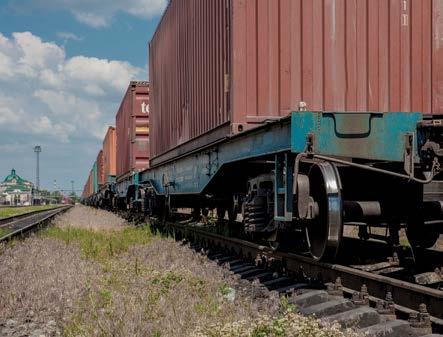
Creating the right environment for private sector solutions
The announcement to divide Transnet Freight Rail into a Transnet Rail Infrastructure Manager (TRIM) and a Transnet Freight Rail Operating Company (TFROC) supports this rebuilding by maximising network utilisation to revive rail transport in the country. TRIM will manage, operate and maintain the rail infrastructure while “opening the market to third parties” alongside TFROC, thereby generating revenue to fund the necessary rehabilitation of the rail network. Embedding these operating divisions and processes must quickly gain the participation of the third parties to be effective. A good start is the proposed tiered system of access tariffs that are aimed at making access more affordable to private operators.
The proposed tariffs will be differentiated based on commodities and corridors, considering kilometres travelled or gross tonnes per kilometre. This will further open the network up to a range of players. Additionally, those who invest in infrastructure can recover costs through differentiated tariffs based on usage and service levels. Over time, this strategy to promote infrastructure investments could stimulate broader economic activity by enhancing connectivity between key economic regions.
Change won’t happen overnight. New private trains are not expected to hit the rails until 2027. With the terms and conditions of access now established, we have a solid foundation for private investment to enter the picture.
Now is the time for government reforms to eliminate wasteful spending and enhance efficiency in logistics and transportation. This process has already started. The auditor-general recently called on the board of the Passenger Rail Agency SA (PRASA), which incurred R3.8 billion in irregular expenditure, to fast-track its infrastructure modernisation programme, which aims to improve service delivery. Government efforts to reduce fragmentation and duplication of processes across sectors will be crucial for success.
With the Transport Department’s establishment of a new unit equipped with the skills and expertise to design, negotiate, and manage projects, as well as ensure efficiency in public-private agreements, the sector appears to be moving in the right direction.
Private sector participation can prove effective at solving challenges
South Africa has a strong historical precedent for successful public-private partnerships (PPPs), most recently demonstrated in the energy sector.
Since South Africa introduced PPPs in 1998, over 35 large-scale projects worth more than R90 million have been initiated. Notably, the transport sector has seen the largest PPP projects, accounting for an estimated R65-70 billion in spending on initiatives like the Gautrain Rapid Rail Link.
Recent partnerships with Transnet have already made collaborative projects more feasible. For example, a five-year agreement is already in place with Sasol to deliver ammonia to customers, with Sasol funding the maintenance of the fleet for Transnet.
However, where these improvements came about through partnerships, the new Network Statement and Transnet’s ambitions now call for companies to invest in and operate parts of the rail network, a distinct departure from what has been done in, for example, the energy
sector. Transnet’s renewal approach leaves it up to freightdependent sectors – like mines – to decide just how involved they would like to be.
These positive shifts in the rail sector mean mining companies have a pool of emerging opportunities to leverage. They must now consider an appropriate level of participation in the rail revival, which applies to both financial contributions and operational involvement needed to achieve the desired results. Participation can come in the form of individuals or forums for the good of the corridor or industry.
On the lower end of the spectrum, companies can start affecting ancillary railway services; with increasing investment, they can impact critical operations or decide to become an end-to-end provider. The more involved mines get, the easier it becomes to mitigate risk from an underperforming network. This deeper involvement will require specialist expertise and large-scale investment.
For these players, rail investments will also impact various stakeholders, some of whom may have conflicting interests. This emphasises the importance of consensus and buy-in when getting involved in rail through finances or operations. It is important for mines to consider how their ambitions align with the national objectives of job creation and economic growth as they participate in the revival of the rail network with Transnet.
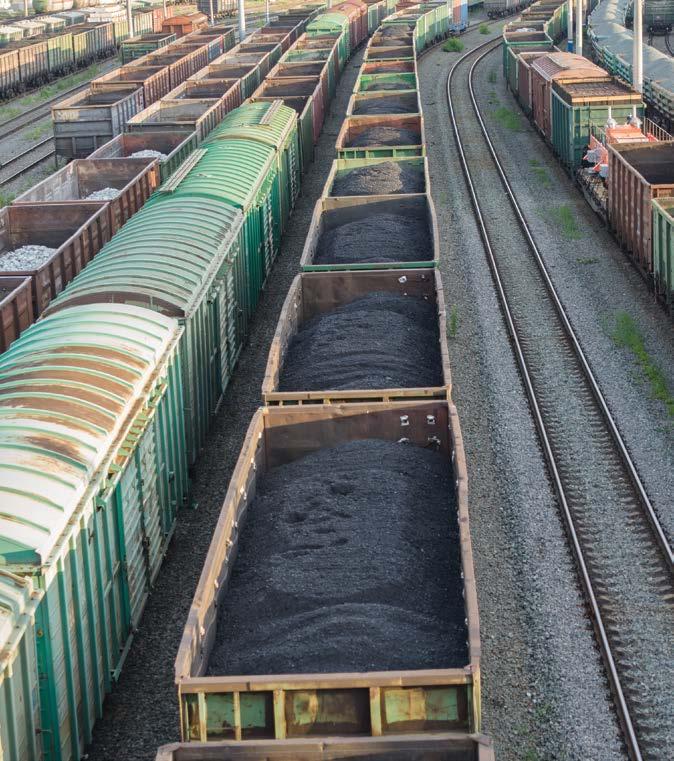
Overall, PSP has the potential to revitalise South Africa’s rail transportation sector and boost economic growth. With a supportive legal framework, effective governance, and operational models, along with public sector investment and stability, the payoff could be significant. But before success is declared, mines must tread carefully; balancing their appetite for investment with the need to build consensus with stakeholders and use collaborative approaches to minimise exposure.
At MegChem Innovation Is the key driver of our success and as such we understand the need for faster, cost-effective engineering solutions. Our adoption of the concept of modular design and prefabrication enables us to meet these demands while maintaining quality and safety.
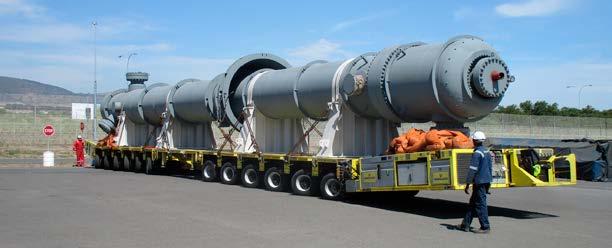


CONTACT US
Secunda - Head Office
Tel: +27 (0) 17 620 2200
Fax: +27 (0) 17 620 2350 doc.control@megchem.com
Centurion Office
Tel: +27 (0) 12 644 4680 Fax: +27 (0) 17 620 2350 doc.control.pta@megchem.com
Traditional plant construction of construction everything onsite is a time-consuming and complex process, by using modular design, where a project is divided into pre-engineered modules fabricated off-site, we can significantly reduce risks, improve efficiency, and minimize the overall project timeline.
• Faster Construction: Simultaneous on-site preparation and off-site fabrication cut construction time, allowing for quicker plant operations.
• Cost Savings: Prefabrication reduces labour and logistics costs while minimizing waste.
• Enhanced Safety: Building in controlled environments reduces on-site risks, ensuring compliance and preventing delays.
• Superior Quality Control: Off-site fabrication allows strict quality checks, minimizing rework.
• Scalability: Modular designs offer flexibility for future expansions without disrupting operations.
• Environmental Benefits: Fewer on-site workers and deliveries reduce emissions and disturbances to local communities.
We make use of several technological advancements including: advanced 3D Scanning and modelling tools to design modules, ensuring precision and seamless on-site integration.
Our multidisciplinary teams collaborate closely with trusted fabrication partners to deliver high-quality, fully tested modules for efficient assembly and installation.
In a recent project, our modular approach enabled us to meet tight deadlines, reduce costs, and enhance productivity, delivering the project ahead of schedule.
Modular design and prefabrication are shaping the future of Engineering. At MegChem, we are committed to pushing the boundaries of innovation to provide faster, safer, and more cost-effective solutions for our clients.

CapeTown Tel: +27 (21) 001 0237 Fax: +27 (0) 17 620 2350 wcdoc.control@megchem.com
Sasolburg Office
Tel: +27 (0) 16 981 4806
Fax: +27 (0) 17 620 2350 doc.control.vdb@megchem.com
South Africa’s logistics sector takes a giant leap towards sustainability with the rollout of electric vehicles.
Vector Logistics is making a bold move towards sustainability with the introduction of its first fully electric, bumper-to-bumper netzero vehicles. This innovative fleet rollout is a crucial step in the company’s journey to achieving net-zero operations by 2050.
“Sustainability remains at the heart of our business strategy. We’re committed to creating an agile, resilient logistics network that adapts to market changes while maintaining service quality,” says Keith Pienaar, CEO of Vector Logistics.
The global climate crisis is intensifying, and the latest research shows that to prevent global warming from surpassing 1.5°C, the world must cut emissions from 51 billion tonnes to netzero by 2050. In response, Vector Logistics is committed to reducing its greenhouse gas emissions by at least 42% by 2030.
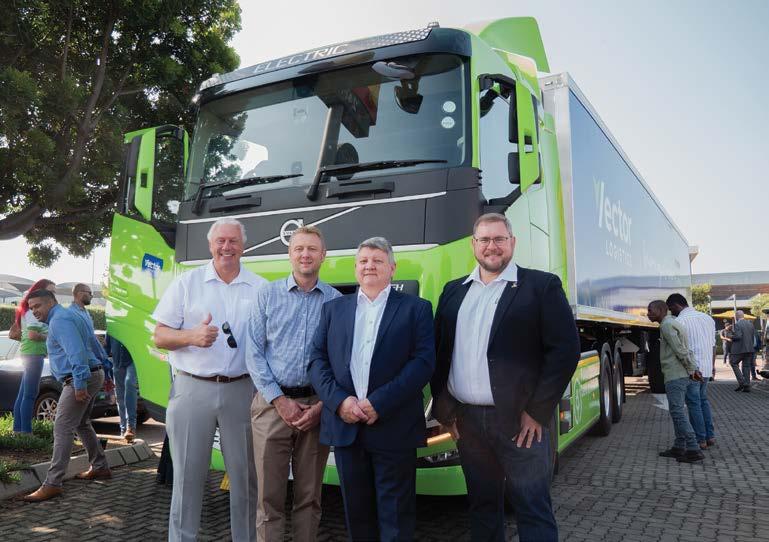
“This innovation represents a step change in how we approach decarbonising our operations and reinforces our dedication to developing value-driven, environmentally conscious solutions,” Pienaar adds.
The partnership between Vector Logistics and Volvo Trucks South Africa has created a groundbreaking logistics solution, integrating Volvo BEV truck tractors with solar-powered e-axle trailers to establish a fully
electric, bumper-to-bumper logistics system. Unlike conventional electric trucks, which only focus on the vehicle’s powertrain, this system charges both the truck and trailer batteries at Vector distribution centres’ solarpowered charging stations. In transit, the e-axle trailers generate kinetic energy to further recharge the batteries, powering essential systems like refrigeration units and tail lifts during delivery.
These state-of-the-art trailers don’t just reduce emissions – they provide an integrated, net-zero logistics solution that also powers essential components during transport. A diesel backup is incorporated into the refrigeration system to ensure operational continuity in emergencies, when the solar-powered energy is depleted.
The rollout of these net-zero vehicles will support Vector Logistics’ deliveries in Johannesburg and Cape Town, helping the company align with its clients’ sustainability goals and reinforcing Vector’s commitment to collaboration in reaching shared environmental objectives.
This launch showcases our commitment to making a tangible, positive impact on both our environment and our communities, while also equipping our staff with best-in-class equipment...
“We believe that sustainability must be embedded in everything we do – from electrifying our fleet to adopting renewable energy solutions and championing sustainable practices across the value chain,” says Annelie Govender, CHRO and ESG Lead at Vector Logistics. “This launch showcases our commitment to making a tangible, positive impact on both our environment and our communities, while also equipping our staff with best-in-class equipment and empowering them with the knowledge and skills needed to drive our sustainability agenda forward.”
Vector Logistics’ ambitious Environmental, Social, and Governance (ESG) strategy also focuses on expanding solar PV installations at their facilities, reducing reliance on grid electricity, and delivering sustainability training to 100% of their workforce.
As the first logistics provider in South Africa to launch such an integrated fleet, Vector is inspiring others in the industry to follow suit. “To stay competitive and contribute meaningfully to our planet, we must lead with innovation. Our investments in electric vehicles and renewable energy represent the future of logistics in South Africa,” concludes Pienaar.
In collaboration with Volvo Trucks South Africa, two Volvo FH 6x4 battery electric truck tractors were delivered to Vector Logistics as part of this rollout. These trucks, with a gross combination weight of 48.6 tonnes, are equipped with three electric motors producing 665hp and 2 400Nm of torque, powered by a 540kWh battery pack. They will be used for regional distribution in Gauteng and Cape
Town. Vector has installed high-speed DC charging stations at its depots, allowing the trucks to travel up to 300km when fully charged.
“We are excited about Vector Logistics’ shift towards electrification. Like Volvo Trucks, sustainability is part of their core values, and together we believe this innovative solution will help shape the future of the local logistics landscape,” says Waldemar Christensen, MD of Volvo Trucks South Africa.
Volvo Trucks has provided a holistic solution, including route analysis, battery optimisation, servicing, and maintenance tailored to Vector’s operational needs. This partnership ensures that Vector Logistics has access to the necessary tools for effective route planning, energy management, and maximising uptime.
“Electric trucks provide a silent, vibration-free ride, ideal for locations like restaurants and supermarkets where noise reduction is crucial,” says Eric Parry, Volvo Trucks’ Sustainable Solutions Senior Manager. “The trucks are also equipped with Volvo Dynamic Steering, making them easier to manoeuvre at low speeds, which is a significant advantage in metro areas.”
While electric trucks have proven to be a key to reducing CO2 emissions and improve air quality, challenges remain, particularly with South Africa’s load shedding. However, Parry notes that for regional distribution, planning is key. “Operators will have the necessary tools to plan their charging options according to their workload and routes, even with load shedding,” he says.
Electric trucks also offer operational advantages such as the ability to make deliveries during off-peak hours and access areas that traditional diesel trucks cannot, such as inside buildings.
“Volvo Trucks has been committed to social, environmental, and economic responsibility since our inception. Protecting the environment is the biggest challenge we face, and we’re proud to lead the charge in electrification, helping our customers reduce their carbon footprint,” concludes Christensen.
As Vector Logistics and Volvo Trucks join forces in this transformative move, the future of logistics looks greener, cleaner, and more sustainable than ever before.
In a challenging economic climate, businesses are looking to their finance teams for strategies to maintain profitability amid rising costs. The default response? Raising prices.
By Rowan De Klerk, CEO of The CFO Centre South Africa

“Businesses must look beyond price increases and explore alternative strategies to sustain profitability and remain competitive.”
It’s an understandable reaction, given that between the 2023 and 2024 financial years, PwC’s market analysis of South Africa’s manufacturing sector reported a 2.53% decline in revenue, a 21.04% drop in net operating profit, and a staggering 145.66% decrease in net profit –signalling a sharp profitability downturn.
At the same time, manufacturing is under pressure from weakened demand, making it even harder to raise prices or attract new markets. In December, manufacturing activity continued its downward trend, with Absa’s
seasonally adjusted Purchasing Managers’ Index (PMI) falling 1.9 points to 46.2. This marked the second consecutive decline, reflecting the tough economic conditions manufacturers faced at the end of last year.
With these pressures, another fuel price hike and the looming risk of loadshedding, raising prices may seem like the only viable option. However, businesses must look beyond price increases and explore alternative strategies to sustain profitability and remain competitive.
Relying on price increases to boost profits can backfire, alienating customers and reducing competitiveness.”

Although it might provide a short-term boost, solely focusing on increasing prices to stay ahead of supplier increases will only drive inflation, and this doesn’t benefit the country.
With manufacturing contributing 13% to South Africa’s GDP and projected to grow at an average rate of 5.7% per annum over the next decade, it’s crucial that manufacturers, in particular, rethink their bottom line instead of simply passing on costs to customers. The real opportunity to improve profitability often lies within the business itself.
Reviewing manufacturing processes from ‘cradle to grave’ is one of the most effective ways to manage costs. Manufacturers examining their pricing strategies should apply the same level of scrutiny to their suppliers. Ensuring that suppliers are not simply passing cost increases onto you without offering better terms is crucial.
However, these conversations require strong supplier relationships, or renegotiating contracts will become difficult. The ability to negotiate not only secures better terms but also helps businesses optimise inventory management. Similarly, understanding the full cost of
import and export activities can expose hidden inefficiencies that impact profitability.
Employee productivity another key factor; investing in training and development enhances efficiency, reduces costly errors, and strengthens longterm performance. Regular benchmarking against industry standards allows businesses to identify gaps, adopt best practices, and stay competitive.
I’ve worked with companies that believed their margins were tight, that is, until they conducted a deep dive into their cost structures and uncovered unnecessary expenses, inefficiencies and untapped revenue streams. Even a 1-2% reduction in expenses can directly impact the bottom line, making cost management a critical focus. However, profitability alone doesn’t translate to cash – profit is not cash until it’s in the bank.
The key to improving liquidity lies in shortening the operating and cash flow cycle. A prolonged cash flow cycle creates a funding gap, especially when payments from customers take time to materialise. If you’re offering 60day payment terms, consider tightening them to 30 days – many businesses are overly generous, particularly when dealing with large corporates.
I recall working with a company struggling with cash flow because corporate clients were taking 90-120 days to pay. They were relying on an expensive overdraft facility just to keep operations running. By taking the time to understand their business model and how cash moved through the business, I was able to help them reframe their financial position and communicate this effectively to their bankers. This led to a restructuring of their financing model –switching to a turnover-based revolving credit facility –
which unlocked cash flow, supported rapid scaling, and ultimately helped them quadruple in size within a few years.
Strong margins don’t always translate to strong financial health – poor overhead management can quickly erode profitability. Salaries are often an organisation’s largest cost, making it crucial to have the right people in the right roles. While training and development can drive operational efficiencies, these gains are easily lost without a well-structured team to implement and sustain them.
Technology is another crucial driver of efficiency. Businesses that fail to integrate customer relationship management (CRM) software, manufacturing systems, and financial data often face delays, misalignment, and unreliable information. This is where artificial intelligence (AI) can make a significant impact on operational efficiencies.
By automating repetitive tasks, AI enables employees to focus on higher-value strategic responsibilities. Identifying areas where AI can support teams enhances productivity, allowing employees to design better customer experiences and build stronger connections with potential customers directly influencing the bottom line.
The most successful manufacturers aren’t those that simply raise prices – they’re the ones that run smarter, more efficient

operations. Relying on price increases to boost profits can backfire, alienating customers and reducing competitiveness.
In this challenging economic climate of weakening demand, rising costs and a decline in manufacturing activity, businesses must rethink their approach to profitability. Instead of price hikes, manufacturers should focus on improving efficiency, optimising operations, and building financial resilience to drive sustainable growth.
This is where the right financial leadership makes all the difference. A bookkeeper and accountant record the past, but a CFO helps map the future – guiding business owners to proactively navigate challenges, optimise cash flow, and implement strategies that unlock long-term value. In uncertain times, businesses need forward-thinking finance professionals who can provide the insights and direction needed to thrive.




As the fuel industry continues to experience volatility due to rising fuel prices and logistical pressures, insurance guarantees are turning out to be a critical tool for financial stability and operational continuity – for both suppliers and buyers.

“The fuel industry is dealing with everything from fluctuating global oil prices to the constraints of local storage capacity. Before any of these challenges stop the industry in its tracks, guarantees offer a way to mitigate risk and maintain trust between suppliers and buyers – keeping the fuel flowing and the country growing,” says Sarah Wright, Senior Underwriter at Lombard Insurance, pointing out the growing importance of these guarantees.
For fuel buyers, a supplier’s inability to provide fuel can trigger cash flow crises. says Wright, “When buyers are forced to source fuel elsewhere at short notice, they often need to pay upfront, which is a drastic shift from their usual credit arrangements. This risk can often be mitigated by securing a credit line – through an insurance guarantee – with more than one supplier. A guarantee ensures the suppliers have the confidence to extend credit terms.”
The focus for these guarantees has changed as South Africa has transitioned from mostly importing crude oil and refining it locally, to mostly importing refined products. Wright says the shift has placed additional pressure on the industry as guarantees are no longer limited to local suppliers and refiners, but also need to be issued to international traders. By-products like bitumen, previously produced as part of the refining process, must now also be imported.
“Storage limitations further exacerbate the issue,” says Wright. “The demand for the importation of refined products has increased, but we simply don’t have the capacity to store the product at the ports.”
Lombard Insurance has positioned itself as a key player in offering fuel guarantee solutions specifically relevant to multiple stakeholders, including airlines,
However, guarantees also come with challenges.
“Given the very tight margins in the fuel industry, there is always a risk that some companies might get creative to find ways to increase margins,” Wright acknowledges.

mining operations, transport companies, and wholesale distributors. These guarantees provide an alternative to hefty upfront cash payments, easing the cashflow strain on buyers.
“Our industry and market insight allows us to offer a great service to both buyers and suppliers in the fuel industry,” says Wright. “For suppliers, this means reduced exposure to default risk. For buyers, it’s about enabling growth without the immediate need for liquid capital.”
A wholesaler’s growth journey Wright recounts the impact of an insurance guarantee: a fuel wholesaler approached Lombard during a period of rapid growth. The supplier required a substantial guarantee before extending a credit line to the wholesaler.
“After meeting the client and understanding them and their business – not just the numbers – we were able to issue the guarantee, enabling them to purchase fuel from the supplier on credit. Over the next four years, we worked closely with them to monitor and manage risk effectively, growing with them as they took on more clients and grew their business. We have enabled them to move away from other more expensive forms of financing which they were historically using to pay for the fuel upfront.”
“We keep close to our clients and the industry as a whole, to mitigate this risk.”
Still, she says: “Guarantees are not just about mitigating risk; they’re about enabling business continuity. They provide the stability that both suppliers and buyers need to thrive in an unpredictable market.”

For stakeholders in the fuel industry, Lombard’s specialised knowledge and proactive approach offer more than just financial protection – they represent a partnership built on trust.
partnership built on trust.
South Africa has a housing supply backlog of at least 2.2 million units, with a significant shortage in the affordable housing or “gap" market, according to a recent study by the Centre for Affordable Housing Finance (CAHF).
The gap housing market is generally considered to comprise households earning too much to qualify for Reconstruction and Development Programme (RDP) housing, but too little to obtain traditional bank-financed homes in the open market.
Renier Kriek, MD at Sentinel Homes, says 40% of consumers fall into the RDP housing category (household incomes below R3 500 per month) and the wealthiest 30% of households are well-served by the open housing market.
Filling the gap
The gap market is the middle 30% of consumers where the supply of housing stock is extremely low, even
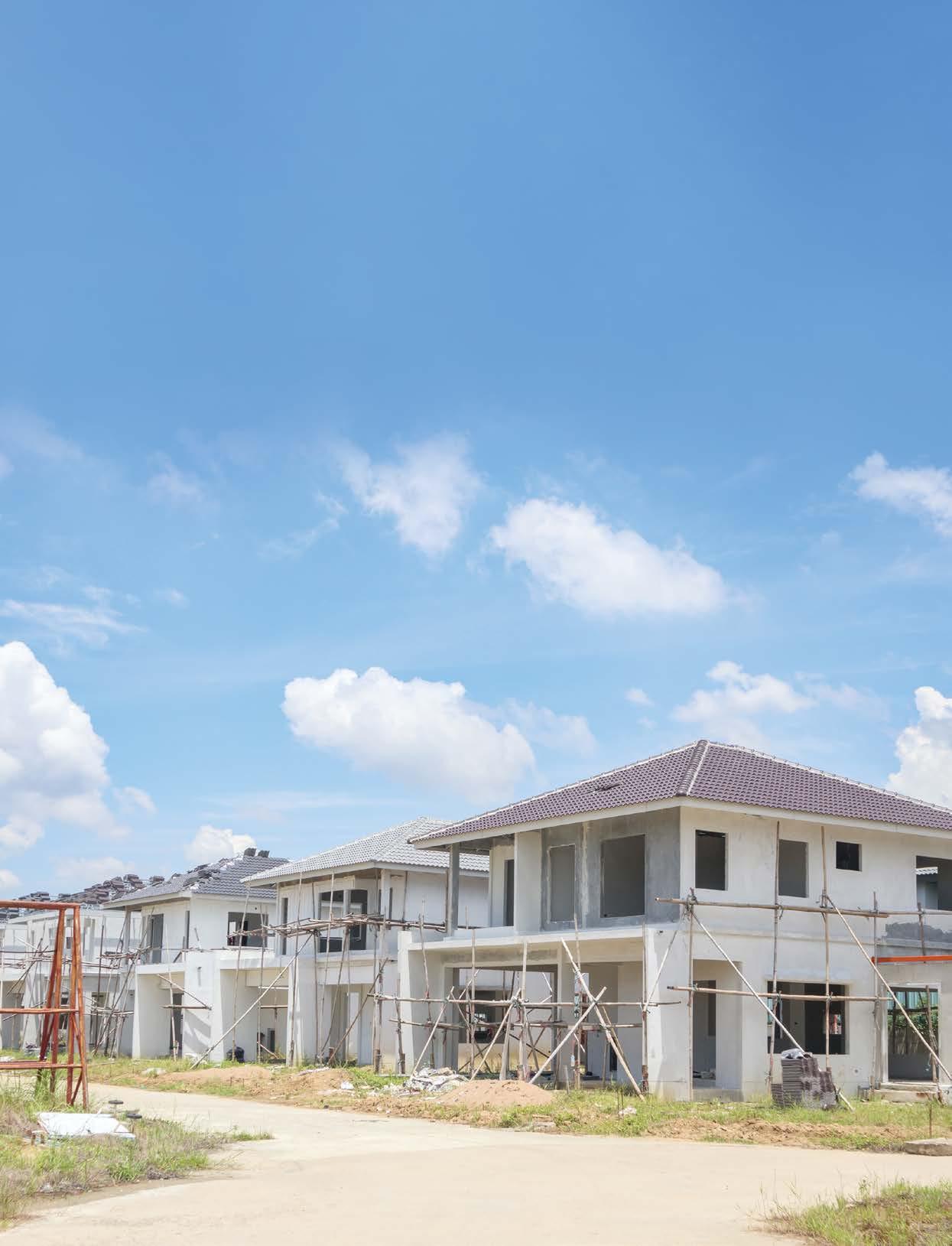
declining, despite massive demand. Kriek argues that a market design error is to blame for this demand going unmet. Adverse market design disincentivises the holders of capital to invest in affordable housing.
The biggest hurdle relates to the unnecessary, cumbersome, and expensive processes that are associated with evictions and foreclosures. The cost of resetting the transaction (evict or foreclose) is prohibitive in South Africa and does not match market circumstances.
South Africa should adjust their regulatory environment to favour private sector investment and the expansion of supply.
“We need to reduce the transaction cost for the holders of capital to take their chances on consumers who are not acceptable risks in the unduly high-tenure security environment. In this way, some people will move into the formal housing market and fall out again, and perhaps more than once in their lifetime. If we go through enough of these cycles, eventually everyone will be housed.”
Another prevailing though reasonably fixable market design problem relates to government subsidies. The Department of Human Settlements has been offering the First Home Finance (FHF) subsidy, previously called FLISP, to households in the gap housing market. FHF aims to subsidise affordable first-time homeownership opportunities for households with incomes from R3 501 to R22 000 per month through an inverse means-tested subsidy, where the cash grant is lower, the higher the household income.
“Millions of rands earmarked for this subsidy have remained unclaimed in the past and continue to remain unclaimed,” says Kriek. “This is not because people don’t about the incentive or do not desire it. The first challenge is the relative scarcity of gap housing stock, which is driven by poor demand due to incentives that are unfavourable to the deployment of capital in this segment, whether by landlords or home loan providers.”
Kriek argues that the subsidy design has unintended consequences resulting in market participants, such as estate agents, being unwilling to sell to subsidy recipients. “Due to overzealous fraud prevention measures and perhaps also an unwillingness to integrate into the existing market infrastructure, government has traditionally insisted that the registered title deed contains the name of the subsidy recipient before they release the subsidy amount.
“This means that the subsidy portion is usually received months after the transfer, unlike all other funds in a property transaction, which are secured by third party payment functionaries such as banks or attorneys.
Kriek admits that this solution may sound slightly callous and counterintuitive to the casual listener. “The alternative, retaining our restrictive policy environment, is even more callous and is currently barring people from ever getting the opportunity to enter the formal housing market. What’s the use of being ‘born free’ if you will never realise that constitutionally mandated right of access to adequate housing?”
This makes each property transfer involving a subsidy inordinately complex, and everyone involved prefers doing the same transaction with a consumer who does not rely on a subsidy. Usually, it’s the estate agent waiting for the subsidy payment to receive their commission, and that is simply an unacceptable adverse incentive if government’s intention is to have the subsidy reach its intended recipients.”
their commission, and that is simply an unacceptable
administration of the subsidy remains positively
authority for each of the provinces, each with a
Though recent developments seem to favour fixing the market design shortcomings of FHF, the administration of the subsidy remains positively archaic. There is a national subsidy authority that can approve and pay subsidies, and a separate subsidy authority for each of the provinces, each with a unique set of rules and procedures and a separate application procedure. This is a quagmire for lower income consumers to navigate successfully, especially where those who rely on subsidies are already viewed negatively by market intermediaries such as estate agents and transferring attorneys.
market design solutions that can solve the problems
even get worse, says Kriek, who fears that the current government might not have the ability to adequately
affect the necessary policy and regulatory changes.
It will take significant political capital to implement market design solutions that can solve the problems facing the gap housing market. If we do nothing, it may even get worse, says Kriek, who fears that the current government might not have the ability to adequately diagnose the problem, much less the political will to affect the necessary policy and regulatory changes.
However, if it could succeed, the job creation downstream from that could go a long way towards achieving the government’s own job creation programme recently articulated in the President’s State of the Nation (SONA) address to Parliament.
downstream from that could go a long way towards achieving the government’s own job creation Parliament.
